The Many Gifts Of The Goji
Exploring the health benefits of Goji Berries, touching on cultivation techniques, companion planting, recipes ideas and info on the rich cultural history of this medicinal-grade superfood.
The goji berry plant (Lycium barbarum, Lycium chinense and the lesser known Lycium ruthenicum), also known as a wolfberry (gouqizi, 枸杞) in Chinese, is a scrambling deciduous shrub with long, sparsely spiny weeping branches. It’s a Lycium (boxthorn) species that is a member of the Solanaceae (nightshade or tomato) plant family. It is native to regions of mainland East and Southeast Asia (including China, Mongolia and Tibet in the Himalayas).
Tibetan Goji Berry (Lycium barbarum) have also now been naturlized (and grow wild without human assistance in several States in the US (including but not limited to Arizona, California, Colorado, Utah, New Mexico, Texas and Missouri). This is apparently a result of Chinese transcontinental railroad workers living in those (and surrounding) states over 160 years ago. Long used for both food and medicine in China, wolfberries were a part of the railroad workers diet (and some would have inevitably been dropped or perhaps cultivated along the way).
Dr. Donald Daugs, who transplant some of the naturalized Goji berries found growing wild in Utah into his garden in Cache County, and identified the West Desert plants. These plants not only thrived, but also produced heavy fruit crops. Eight years of research has resulted in a thriving wolfberry nursery business and prospects for a major new low impact-high income crop for farmers (or gardeners looking to embrace food sovereignty) desiring to diversify or add a new crop component to their farm.
The result of his heirloom North American Goji breeding efforts can be read about here. As with many types of Red Goji Berries, his heirloom “Phoenix Tears” Goji berries are hardy to zones 3-9.
Either intentionally planted or dropped along the way some wolfberries began to grow along the rail line in Utah. One site where they are found is near Promontory Point, where the east-west rail lines met. Birds may have carried seeds dropped by the railroad workers or were intentionally planted by the Chinese. Early settlers may have found the plants and transferred them to their homesteads. Phoenix Tears wolfberries were discovered growing on a ranch near Sinks of Dove Creek.
The fact that Goji Berries were able to become naturalized in such a barren landscape (which most plants have a hard time growing in) without much human help speaks to the immense potential of this species in food forest design (especially in arid climates).
Goji Berries In Our Garden
I love how versatile and low maintenance Goji Berries are in our garden. We can harvest three different crops from our Goji Vines. The new growth shoots in spring can be added to stir-fries etc as a vegetable, the leaves can be added to soups or smoothies and then of course the berries (which ripen up in waves from mid summer all the way the first hard frost in cold climates, often producing 5lb plus berries on each vine annually) are very versatile as well (and each one of those crops is extremely nutrient dense).
They do take a bit of patience to get established (2-3 years from seed) but for tight spaces they open up the potential for producing a lot of calories (and a potent array of vitamins, amino acids, minerals and antioxidants) using very little square footage (especially if one takes advantage of vertical cultivation/trellising).
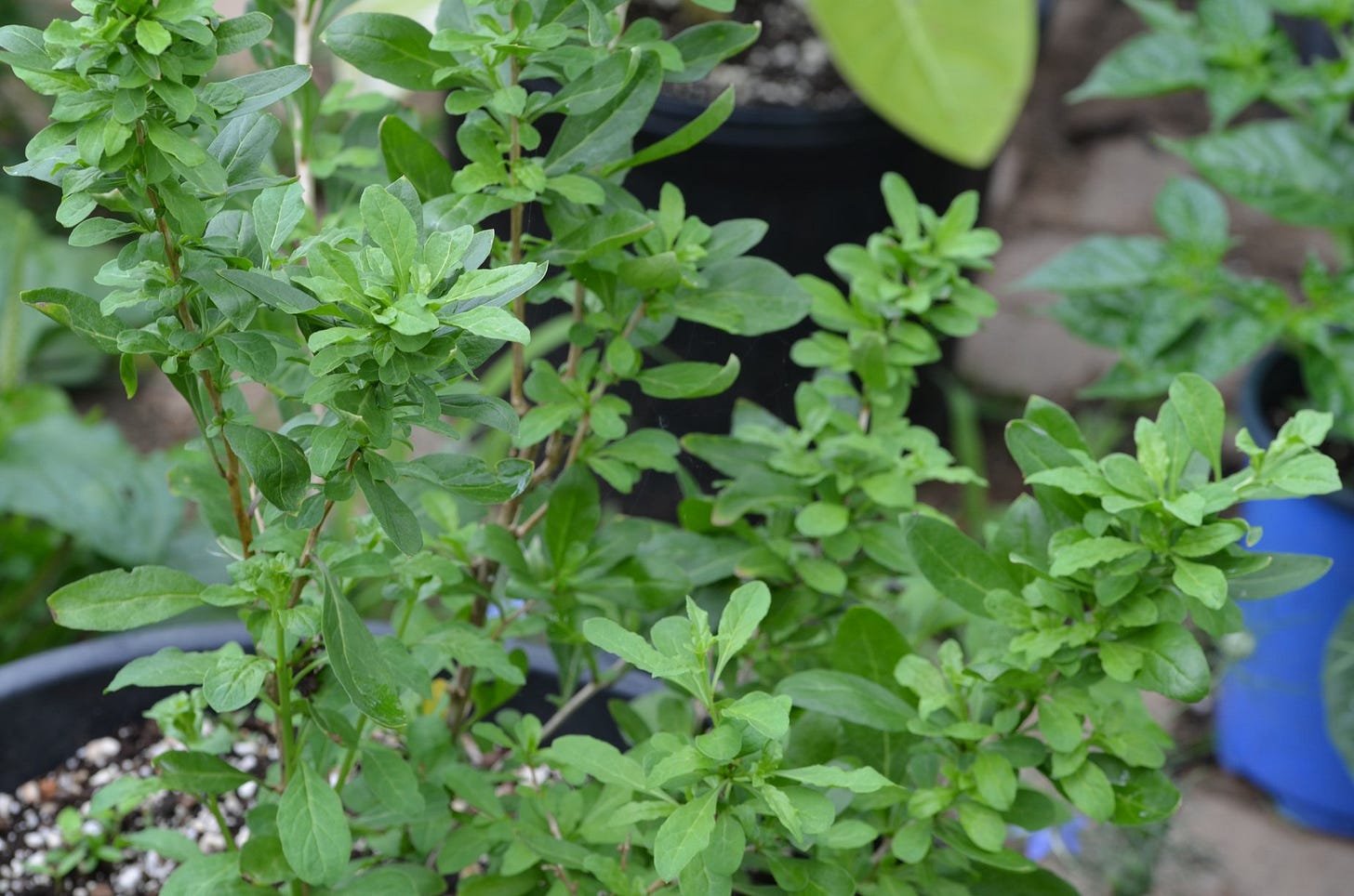
We grow three different species of Goji Berry (Lycium barbarum, Lyceum chinese and Lycium ruthenicum or “Black Goji Berries”)
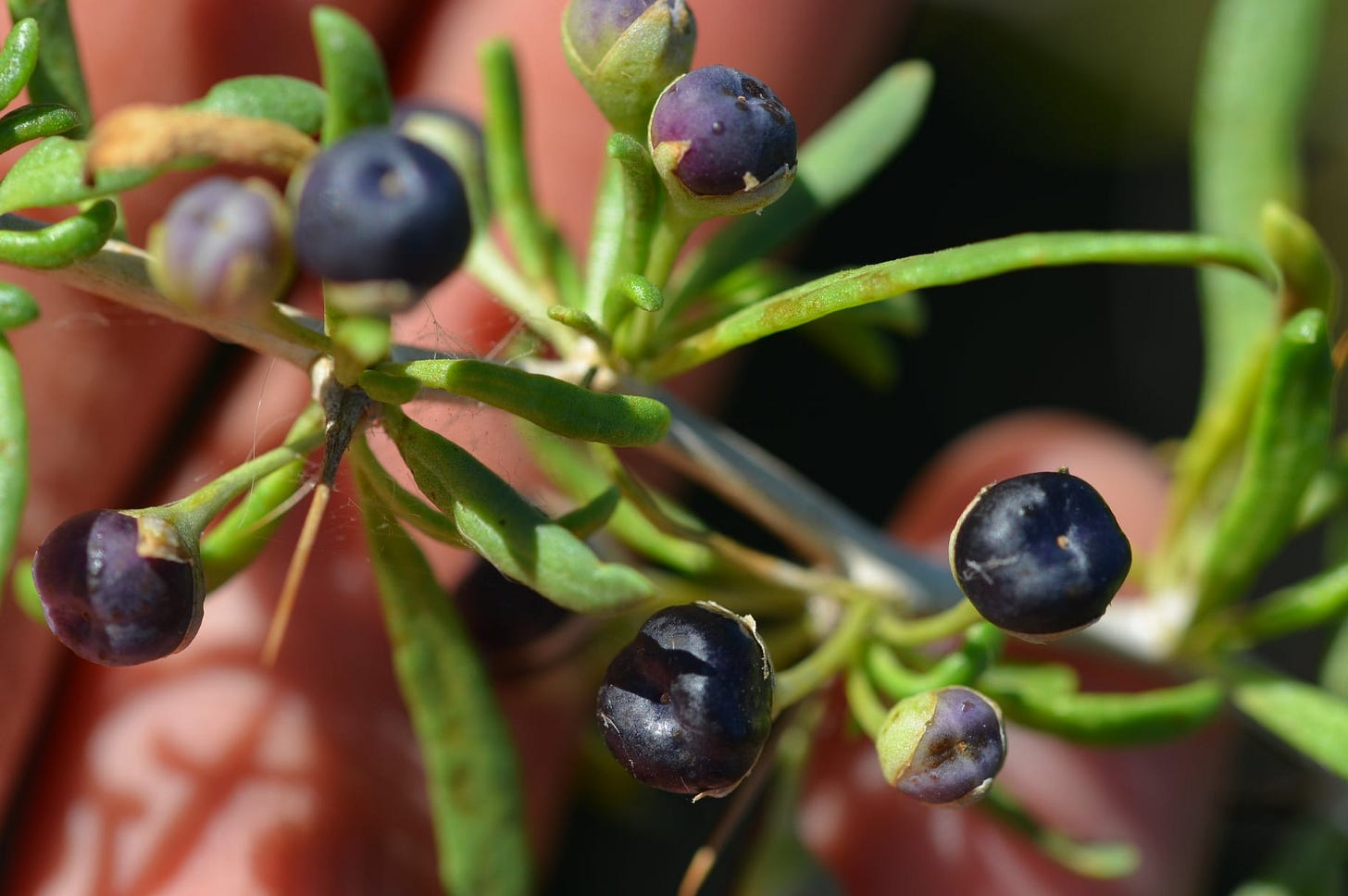
I got our original seeds and cuttings from a variety of sources. Some of our first vines (now 7 years old) were grown from seeds that I extracted from wild harvested dried berries a friend sent us from Mongolia. More recently a friend helped us get some bare root plants from Phoenix Tears Nursery. I also managed to get some seeds I extracted from dried berries I bought online (some labeled as being harvested/air dried in the Qinghai-Tibet plateau and others from mainland China) to germinate and then we got some others from the Baker Creek Rare Seeds website.
I like to try and maximize genetic diversity in our garden and focus on progenitor species and/or crops that still grow in the wild when ever possible (as they are more adaptable to unstable and/or extreme temperatures and weather patterns).
History and Traditional Cultural Usage Of Goji Berries:
The fruit (and leaves) have been an ingredient in traditional Chinese, Korean, and Japanese medicine since at least the 3rd century AD.
When it comes to Traditional Chinese Medicine, the book, Shennong Bencaojing, is perhaps the oldest written record available. Written by the emperor Shennong himself in the year 250BCE, the book records many of China’s oldest oral medicinal traditions and provides a vivid insight into the uses of different plants and herbs used in Chinese medicine.
If you visit Ningxia in China you would be surprised with the general health of residents there. It was proved with a national census that the number of residents of Ningxia who have crossed 100 years of age is about four hundred percent higher than the national average. If you ask anyone there, they would tell you that the secret lies in Goji Berries.
People living in China especially Ningxia have kept Goji berries as a part of daily life. For a person in Ningxia, the day starts with a bowl of fresh Goji berries.
If you read ancient books of Chinese culture, you would find that there were basically three valued tonics for health: ling tzi (reishi) , ginseng and Goji berries (wolfberries). They believed that wolfberries actually nourished the yin, supported the liver and kidneys, supported the blood, strengthen the eyes, muscles and bones and did wonders for Chi, the life force.
It was seen that consumption of wolfberries actually prevented the occurrence of diseases like cancer, arthritis and diabetes and also worked as anti-aging tonic. People in China believe it strongly that wolfberries could increase your life span considerably if you take these for extended period of time.
There are ample reasons behind these suppositions. The ancient beliefs of people in China about Goji Berries are not mere superstitions or conjecture, There are now scientific facts to show the many health benefits of eating Goji berries (some of them are listed below).
Goji berries are a good source of vitamins and minerals, including:
• 11 essential and 22 trace dietary minerals
• 18 amino acids
• 6 essential vitamins
• 8 polysaccharides and 6 monosaccharides
• 5 unsaturated fatty acids , including the essential fatty acids, linoleic acid and alpha-linolenic acid beta-sitosterol and other phytosterols
• 5 carotenoids , including beta-carotene and zeaxanthin (below), lutein , lycopene and cryptoxanthin , a xanthophyll numerous phenolic pigments ( phenols ) associated with antioxidant properties
• Calcium . Goji Berries contain 112 mg per 100 gram serving, providing about 8-10% of the Dietary Reference Intake (DRI).
• Potassium . Goji Berries contain 1,132 mg per 100 grams dried fruit, giving about 24% of the DRI.
• Iron . Goji Berries have 9 mg iron per 100 grams (100% DRI).
• Zinc . 2 mg per 100 grams dried fruit (18% DRI).
• Selenium . 100 grams of dried Goji Berries contain 50 micrograms (91% DRI)
• Riboflavin (vitamin B2). At 1.3 mg, 100 grams of dried Goji Berries provide 100% of DRI.
• Vitamin C content in dried Goji Berries has a wide range (from different sources) from 29 mg per 100 grams to as high as 148 mg per 100 grams (respectively, 32% and 163% DRI). Goji Berries also contain numerous phytochemicals:
• Beta-carotene : 7 mg per 100 grams dried fruit.
• Zeaxanthin . Reported values for zeaxanthin content in dried Goji Berries vary considerably, from 25 mg per 100 grams to 200 mg per 100 grams . The higher values would make Goji Berries one of the richest edible plant sources known for zeaxanthin content. Up to 77% of total carotenoids present in wolfberry exist as zeaxanthin.
• Polysaccharides are a major constituent of wolfberries, representing up to 31% of pulp weight.
Goji berries are considered to be the most nutritious food source on the planet. They are far richer in antioxidants than any other comparable food source tested by ORAC labs.
The fact that the berries contain 18 different amino acids (including all of the essential ones) helps repair body tissue and muscles.
A single 8 ounce serving provides nearly 22 percent of your daily value for protein. For fruit, this is a surprising amount of protein.
The carbohydrates in goji berries are also complex carbs. This means your blood sugar will raise slowly, reducing your risk of a sugar crash afterwards.
Here is a list of some of the many health benefits of eating goji berries:
The goji berries are an “adaptogen,” a term used in the world of medicinal plants to describe a substance with a combination of therapeutic actions on the human body. An adaptogen invigorates and strengthens the system while helping the body to deal more easily with stress by supporting the adrenal glands. In the Chinese medicinal system, the goji berry is known to harmonize the function of the adrenals and kidneys, resulting in enhanced stamina, strength, longevity, and sexual energy.
Nutrient analysis of Lycium barbarum, has verified the antioxidant and mitochondrial potential health benefits of wolfberry fruit and leaves.
Aging can, in large part, contribute to free radical attack on body cells. Reactive oxygen species or free radical oxygen molecules cause damage to DNA, mitochondria, and cell membranes. Antioxidants can play a major role in blunting these effects.
One measure of antioxidant potential is ORAC (oxygen radical absorption capacity). On the ORAC scale, blueberries test at about 30, pomegranate at about 100, and dried Goji Berries at about 300. Dried Goji leaves tested in the fall of 2009 (grown in the US) had an ORAC score of 456 and in the spring of 2010 had a score of 522. Both values indicating an unmatched ability to absorb injurious free radicals that attack the body. Both the dried fruit and leaves clearly qualify as powerful antioxidants.
Phenolics are another nutrient found in wolfberries. Phenolics also can function as antioxidants. Among common fruit, the highest amount of phenolics are found in plums and cherries (28 mg/g). Dried Goji leaves were found to have a phenolic content of 30.5 mg/g, comparable to green tea, but without caffeine.
Dried Goji fruit tested in 2009 had an ellagic acid content of 11.92 mcg/g. This cancer de-activator is a phenolic compound with anti-mutagenic and anti-carcinogenic properties and may explain why certain whole foods have better health benefits than isolated nutrients extracted from them.
Goji fruit and leaves are rich sources of carotenoids. Both fruit and leaves are rich in both alpha and beta carotene, having about eight times that found in spinach. Lutein and zexanthin values are similarly far higher than found in spinach. Lycopene in dried Goji leaves was double that of Ketchup, with no high fructose corn syrup. One can infer from studies that show the benefits of carotenoids from other plants, that wolfberry carotenoids likewise would benefit the eyes, immune system, cell function and antioxidant roles.
Another very interesting Goji Berry nutrient is catechin. Catechins are water soluble and are best known for their benefits in green tea. Catechin is made up of seven subgroups, all of which are powerful antioxidants. Studies also show that catechins influence the break down of fats and the production of inflammatory materials that trigger hunger. Goji dried leaves were found contain all seven subgroups of catechins.
Dried leaves tested in 2009 had a betaine content of 19.38 mg/g. This value is higher than found in wheat bran and wheat germ, two food sources listed as having high betaine content. Betaine is an important human nutrient that is rapidly absorbed and utilized to help to maintain liver, heart, and kidney health. Betaine can reduce elevated homocysteine concentrations.
Vitamins C and E round out the team of antioxidant nutrients found in wolfberry fruit and leaves. Wolfberries also contain various forms of vitamin E. The mix of nutrient E in both fruit and leaves may be superior to many vegetables that have only one type of vitamin E present. Alpha tocotrienol, alpha tocopherol, gamma tocopherol, and beta tocopherol are all present.
The ultimate anti-aging agent in wolfberry fruit is PQQ (pyrroloquinoline quinone). Wolfberries, (Lycium barbarum), have a centuries long reputation as an anti-aging food source. PQQ (pyrroloquinoline quinone), found in Goji (aka Wolf) berries, far exceeds any other known natural source of this nutrient.
Scientists have identified mitochondrial dysfunction as a key factor in aging. Mitochondrial dysfunction and death are now clearly linked in the development of all killer diseases associated with aging. Recent research has documented that mitochondrial dysfunction can be reversed. PQQ not only protects mitochondria from oxidation damage, it also stimulates growth of new mitochondria. The number of mitochondria in body cells, including the brain, decrease with age. Scientists now believe that mitochondria number and function determine longevity. PQQ has emerged as the nutrient that can safely trigger mitochondria biogenesis.
Part of PQQ’s role as an antioxidant is related to its capacity to participate in repeated reactions before breaking down. For example, vitamin C can survive 4 catalitic redox cycles, catachin 75, quercetin 800, and PQQ 20,000. Thus, as a free radical scavenger, PQQ is unexcelled.
A healthy diet can contribute small amounts of PQQ, with natto (fermented soybeans), green tea, green peppers and parsley as examples of foods with some PQQ. Research at present has not identified how much PQQ is needed to influence mitochondrial health. Nutrient analysis of Goji berries grown in the US revealed a PQQ content of 17.9 mcg/g. When compared to natto, with a value of 61 ng/g, Goji Berries have 17,900 ng/g of PQQ. A three ounce serving of Goji Berries far exceeds the documented amount of PQQ needed for normal cell health and probably contributes to its reputation as an anti-aging food.
PQQ is becoming available as a supplement. PQQ levels in Goji Berries are comparable to some supplements with the berries also containing a rich whole food source of many other nutrients. The amount of PQQ available in Goji berries is sufficient to increase the functionality of existing mitochondria and also promote the generation of new mitochondria inside aging cells.
Overall, goji berries boost immune function, increase alkalinity and vitality, provide liver protection, improve eyesight and blood quality, deliver anti-aging compounds, and possess a number of additional outstanding qualities.
Here is a list detailing some of the many health benefits offered by Goji Berries
1. Say Goodbye to Cold & Flu Symptoms:
Because of their high levels of vitamin C, Vitamin A and other antioxidants, goji berries help boost the immune system. Not only does a high level of immunity ward off colds and flu, but it keeps more serious illnesses like cancer at bay.
Vitamin C and vitamin A are two nutrients key to building immunity and preventing common illnesses like a cold, plus more serious chronic diseases like cancer or neurodegenerative decline.
Goji berry benefits also extend to other parts of the body thanks to their polysaccharides and glycoconjugate compounds that promote unique bioactive immunomodulating, anti-tumor and antioxidant activities in the brain, liver, reproductive organs and digestive tract.
In a review of research on the goji berry appearing in Recent Advances in Chinese Herbal Drugs, Dr. Zhou jlnhuang points out that polysaccharides from goji berries enhance cell-mediated and humoral immune response. LBP polysaccharides could increase activity of the body's most powerful disease-fighting immune cells (T-cells, cytotoxic T-cells and natural killer cells) in laboratory animals. Many studies have shown the goji berry to increase the lymphocyte transformation rate and improve the macrophage phagocytic ftmction in animals. LBP assists spleen lymphocyte transformation induced by Concavalin A. LBP increases the antibody reaction to T-cell-dependent antigen (SRBC) , which means that LBP selectively strengthens the T-cell immune response. LBP enhances the T-cell immune response by increasing the number of E receptors on the surface of T-cells or increasing the numbers of T-cells directly. LBP also can be used to reduce lead toxicity because it inhibits the reduction of T-cells and delayed allergy activity induced by lead.
One study was done on seniors in China. This study showed after taking goji berries, lysozyme, IgG and IgA in serum increased in all participants. The activity of interleukin 2 (IL-2) was found to increase 2.26 fold in two-thirds of the participants.
2. Forget About Alzheimer’s (Goji berries offer Neuroprotective and Neuro-regenerative benefits):
Goji berries help protect against neurodegenerative disorders like Alzheimer’s disease.
This may be because of the high levels of antioxidants in the berries, which prevent oxidative stress in the brain.
And, inflammation is linked to Alzheimer’s, so it’s possible that the anti-inflammatory powers of these berries will offset symptoms.
A study on the effect of goji extract has shown promising neuro-protective effects, which researchers hope will have therapeutic potential in the prevention of Alzheimer’s disease.
Previous studies have shown that the goji berry extract has antioxidant properties and protective effects against reactive oxygen species, a group of highly reactive chemicals related to a wide variety of human disorders, including neurodegenerative diseases, cardiovascular diseases, and cancer.
In a newer study, researchers from the Institute of Biophysics under the Chinese Academy of Sciences studied the molecular mechanism under the goji berry's benefits on the neuro system.
The researchers gave goji berry extract to C. elegans with AD. C. elegans is a type of worm with a simple and mapped genome. They found that the extract can break down the deposits of amyloid-beta protein, a key marker of AD. The protein tends to clump together to form plaques that affect brain function.
According to the results published in The FASEB Journal, the extract inhibited the production of reactive oxygen species, thereby inhibiting the generation of the amyloid-beta protein.
Meanwhile, the study also found that the extract can reduce deposits of amyloid-beta protein by activating mtUPR, the mitochondrial unfolded protein response. The researchers also located the gene related to the activation of mtUPR.
Mitochondrial function declines during aging. Cells activate mtUPR when mitochondrial integrity and function are impaired. The mtUPR promotes cell survival and the recovery of the mitochondrial network to ensure optimal cellular function. The mtUPR manipulations are taken as potential therapeutic targets for treating many diseases associated with mitochondrial dysfunction.
The researchers said that their study reveals a new mechanism of how goji berry extracts protect against AD and identifies a novel strategy for treating AD by enhancing the mtUPR.
3. Protect Eye Health (Goji berries offer Ocular-Regenerative and Ocular-Protective benefits):
Age-related macular degeneration (AMD) is the leading cause of blindness in the US, affecting as many as 11 million people. That number is expected to double to nearly 22 million by 2050!
Goji berries are exceptionally rich in zeaxanthin, an antioxidant known for its superb benefits for the eyes. They are often considered a natural treatment for age-related macular degeneration. The zeaxanthin in the berries also protects the eyes from UV exposure, free radicals, and various other forms of oxidative stress.
Even those already suffering from AMD should try some gojis – a major study has shown that consuming lutein and zeaxanthin can slow the progression of macular degeneration once it has started.
What’s more, the antioxidants in goji berry may even be a natural way to prevent glaucoma by protecting the cells in the retina.
One study published in the American Academy of Optometry’s Optometry & Vision Science journal found that drinking goji berry juice daily as a dietary supplementation for 90 days increases plasma zeaxanthin and antioxidant levels significantly, which protect eyes from hypopigmentation and accumulation of oxidative stress compounds that can damage the macula. Other studies show that the goji berry benefits eye health by protecting the retina from ganglion cells, meaning gojis’ antioxidants act as a natural treatment for glaucoma
4. Optimal Weight and Diabetes Management:
Goji berries contain high levels of fiber, which can help you feel fuller for longer. As a result, it reduces the feeling of hunger, leading to fewer calories consumed.
Given that they are low in calories and rich in nutrients, they can find a place in your weight loss diet plan. And goji berries have a low glycemic index , which is why consuming them can reduce cravings for sugary foods and aid weight loss. Reports show that consuming low-glycemic foods can accelerate weight loss.
The berries are also rich in fiber, like most fruits and vegetables. Fiber promotes satiety and prevents binging – and can hence contribute to weight loss. Another study speaks about how goji berries can increase energy expenditure and decrease waist circumference in overweight individuals.
Goji berries contain potential anticancer benefits, according to a recent study published in Life Sciences. Researchers tested goji berry extracts on cancer cells and found out that they induced apoptosis on the cancer, effectively stopping it from spreading further.
Interleukin-2 (IL-2) is a crucial cytokine (cell protein) that induces potent antitumor responses in a variety of cancer models. Several plant polysaccharides contained n Goji berries and leaves have been shown to enhance the production of interleukin-2 (IL-2). Goji LBPs are particularly active in this regard; the enhancing effect of LBP (goji berry polysaccharides) on IL-2 activity was reported by the Institute of Pharmacology and Toxicology in Beijing (1989). In the U.S., IL-2 has been under study as an immune promoting factor since 1983, used for some cancers and for HIV infection.
Other studies from China show that goji berry inhibits the gene mutation induced by TA98 and TAI00. Some scientists believe that goji may be a very good supplement to prevent liver cancer because it exerts liver protection and anticancer effects at the same time.
In one of the most positive studies yet conducted with goji, 79 advanced cancer patients were treated with goji LBPs in a clinical trail studied by Cao GW et al (1994) at Second Military Medical University in Shanghai, China. Their initial results indicated an amazing regression of cancer in patients with malignant melanoma, renal cell carcinoma, colorectal carcinoma, lung cancer, nasopharyngeal carcinoma and malignant hydrothorax. The response rate was an astonishing 40.9 percent for the patients treated with goji LBp. They also observed that the remission of cancers in patients treated with LAK/IL-2 plus goji lasted significantly longer than those treated without goji. In one study on a group of cancer patients, the goji berry triggered an increase in both lymphocyte transformation rate and white blood cell count (measures of immune function). The effect and the mechanism of LBP on inhibiting the growth of human leukemia HL-60 cells were examined. LBP could inhibit the growth of these leukemia cells, and also could induce their death (apoptosis).
6. Goji Berries Improve Lung Health:
Studies showed how taking a goji berry supplement for four weeks decreased inflammation in the lungs and increased white blood cell activity against lung diseases like influenza.
Goji berries can also boost immunity, which has a desirable impact on lung health (9). This property can also help treat respiratory ailments like asthma.
Goji berries can also boost immunity, which has a desirable impact on lung health. This property can also help treat respiratory ailments like asthma.
7. Enhance Fertility And Sexual Health (Goji berries offer a number of Fertility and Reproductive Health enhancing benefits):
The Chinese were really the first to explore the benefits of goji berry, specifically goji berry and sex. They were the first to give this powerfully nutritious fruit a reputation as an aphrodisiac. In traditional Chinese applications, the fruit is administered to strengthen the adrenal system, which is believed to be a center of sexual energy.
So highly regarded was this wolfberry benefit in early Chinese medicine that it even found its way into an ancient, Chinese proverb. It warns men who travel away from their lovers: “He who travels one thousand kilometers from home should not eat goji.”
Studies have shown that goji berries can increase testosterone levels in men, thereby improving their sexual health. They can also work as a potential alternative remedy for erectile dysfunction.
Research also states that the berries can exhibit fertility-enhancing effects in men and women.
How Goji Berries Benefit Male and Female Fertility:
Goji berries have been used to improve male and female fertility for over 2000 years. Packed with antioxidants goji berries are a great way to increase your fertility naturally in both men and women.
They have a number of benefits for the reproductive system including:
Increasing sperm count and strength
Improving sex drive
Improving reproductive hormone function
Benefitting the ovaries
The Antioxidant Effects of Goji Berries for Fertility
One of the major causes of male infertility is oxidative stress. Oxidative stress is caused by molecules known as free radicals attacking and damaging cells. It is thought to be involved in as many as 30–80% of cases of male infertility. Oxidative stress reduces sperm production and function, leading to a decreased chance of natural conception or successful IVF.
Goji berries have also been used to improve the fertility of women, especially those with premature ovarian failure.
Goji berries are known to have powerful antioxidant effects. Antioxidants are chemicals which protect cells from damage due to oxidative stress. Therefore, consuming goji berries on a regular basis could help to improve sperm count and quality, providing numerous benefits for fertility
8. Goji Berries Fight Depression:
Goji berries are rich in B and C vitamins and also contain manganese and fiber – all of these nutrients elevate your energy levels and are known to enhance positivity. The berries have also been used in traditional Chinese medicine to fight depression and other anxiety and mood disorders.
According to a study from the Journal of Alternative and Complimentary Medicine, drinking goji berry juice regularly can help increase energy levels, moods and improve digestive health, too.
Participants who drank goji juice for two weeks had improvements in terms of their feelings of “general well-being,” increased energy levels and better gastrointestinal function (gut microbiome health is directly related to neurotransmitter biosynthesis).
It has been nicknamed “the longevity fruit.” Researchers who study medicinal plants have identified a variety of nutrients in the goji berry that may help people enjoy longer and healthier lives.
Goji berries are rich in antioxidants, such as betaine, carotene, zeaxanthin, and ascorbic acid, which prevent free radical damage and reduce oxidative stress. This improves the overall health and functionality of the body’s cells.
Goji’s unique LBP polysaccharide complex has been found to be a powerful secretagogue (a substance that stimulates the secretion of rejuvenative human growth hormone by the pituitary gland). Goji berries have been traditionally regarded as a longevity, strengthbuilding, and sexual potency food of the highest order. In several study groups with elderly people, the berry was given once a day for three weeks. Many beneficial results were experienced. Nearly 70 percent of patients made impressive gains in their immune defense systems, with a tripling of T-cell transformation functions and a doubling of activity of white cell interleukin-2 (IL-2). The results also showed that spirit and optimism increased significantly in all patients. Additionally, nearly all patients reported improved appetite and better quality of sleep. More than 35 percent of the patients saw a marked recovery of sexual function. Zhang (1993) studied the role of goji's unique LBP polysaccharides in fighting peroxidation, a primary cause of premature cell death. Dr. Zhang and his team measured the changes in the electrical parameters of cell membranes after incubating living cells in a solution containing dangerous free radicals for six hours. They observed that the deadly effects of free radicals on the cells can be prevented and reversed by incubation with LBP polysaccharides.
A seventy-year-old produces only one-tenth of the amount of Human Growth Hormone (HGH) generated by a twenty-year-old. This decline parallels physical deterioration, such as lower levels of energy, muscle wasting, and a tendency to store more body fat. Boosting the natural production of growth hormone helps us feel, look, and function like a more youthful person. Goji berries help our bodies do this in several interesting ways.
There is evidence that goji berries increase longevity because they are high in sesquiterpenoids. Sesquiterpenoids have anti-inflammatory properties. They stimulate the pituitary and pineal glands thus increasing the glandular production of HGH. Human Growth Hormone is a master hormone that influences the level of all hormones in the body. Remember, as we age, HGH decreases. In order to achieve great longevity, we have to maintain HGH production. The goji berry is the only food known that is a confirmed secretagogue (a secretagogue is a compound that stimulates HGH).
The presence of certain amino acids in the goji berry may also promote the production of HGH. The goji berry is a rich source of l-glutamine and l-arginine. These two amino acids work together to boost growth hormone levels in order to revitalize one’s appearance and metabolism.
Mitochondria are the powerhouses of your cells, generating energy to fuel your cells’ biochemical reactions. Via optimizing their function and promoting their rates of regeneration within your body you are building a solid foundation for health, vibrancy and longevity from the cellular level up.
Sufficient mitochondrial biogenesis (the process by which cells increase mitochondrial numbers) is necessary for efficient cell function and haemostasis, which is dependent on the regulation of ATP generation and maintenance of mitochondrial DNA (mtDNA). These procedures play a primary role in the processes of inflammation, aging, cancer, metabolic diseases, and neurodegeneration.
Antioxidants such as Polyphenols (anthocyanins being one example) are considered as the main components of plants, fruits, and natural extracts with proven therapeutic effects relating to Mitochondrial Health. These components regulate the intracellular pathways of mitochondrial biogenesis.
A study by Yu et al. in 2013 showed that Goji Berry upregulated carotenoid metabolic genes of zeaxanthin and luteolin and also improved the biogenesis of mitochondria in the retina of db/db diabetic mice.
Stem cells are the fundamental building blocks of the human body. Cells can differentiate and reproduce any tissue such as heart tissue, muscle, cartilage, bone, or liver. Newborn children have a lot of circulating stem cells that are needed for development and can quickly help them recover from infectious diseases and injuries. As we age, the quantities of circulating stem cells in the body begin to reduce each year, making healing and recovery much more difficult over time. You can increase the production of endogenous stem cells via eating specific superfoods (including but not limited to Goji Berries, Ginger, Anthocyanin Rich Foods and Cacao beans ) to boost your health and circulating stem cell count.
A study in China showed LBP facilitated stem cell proliferation and increased the number of monocytes in bone marrow. LBP helps the monocytes to convert to matured leukocytes. The berry has also been used in a number of recent clinical trials for treatment of bone marrow deficiency conditions (low production of red blood cells, white blood cells, and platelets).
Another three-year clinical study investigated the effects of the goji berry on the immune, physiological and biochemical indexes of the blood of aged volunteers. The results indicated that the goji berry caused the blood of older people to regenerate significantly (with increased oxygenation and white blood cell counts).
Goji berries are helpful for many types of digestive problems. Goji berries are a great digestive aid, they support healthy guy function and immunity by promoting the growth of beneficial bacteria in our gastrointestinal system.
An Asian study found goji supplementation beneficial to mice with inflammatory bowel disease (Chrohn's and ulcerative colitis), the hypothesis was that goji acted as a prebiotic, catalyzing an increase in beneficial gut bacteria.
The Mongolian Institute of Traditional Medicine reported that goji has been used in the treatment of atrophic gastritis, which is defined as weakened digestion due to reduced stomach activity. Patients consumed 10 grams of the whole fruits each time, three times daily before meals for two months and longer with excellent results.
The accumulation of lipid peroxides in the blood can lead to cardiovascular disease, heart attack, atherosclerosis and stroke. Our blood contains the antioxidant enzyme superoxide dismutase (SOD) to fight against lipid peroxidation, but levels of SOD decrease as we age. In a clinical study, goji berry consumption was accompanied by a remarkable 40 percent increase in SOD levels, and a decrease in lipid peroxides of an impressive 65 percent. In another study, vital red blood cells were protected by flavonoids found in goji berries. The protective effects of the total flavonoids of Lycium barbarum goji berries on lipid peroxidation in liver mitochondria and red blood cells of rats induced by oxygen radicals was investigated by Huang Y et al (1999) in China. They observed that the mitochondria lipid peroxidation was significantly inhibited by the total flavonoids of Lycium barbarum and the fluidity of mitochondria membrane was also protected effectively. The shape of red blood cell has remained intact for those with the addition of total goji berry flavonoids, while the shape of the control red blood cells was significantly damaged by oxygen radicals.
*side note: If you have been reading the details of my articles on the health benefits of superfoods you may have noticed the repeating benefits listed that involve optimizing mitochondrial health and improving adult stem cell function/production. That is no accident, when it comes to longevity and getting the most out of life, those two aspects of human biology are of paramount importance, thus I strive to cultivate and learn about such foods (and help others do the same) so that we can all embrace health sovereignty, become our best selves so we can not only life life to the fullest, but also be able to be of greater service to the communities we are a part of.
Goji Berry Leaf Health Benefits:
If you are growing Goji Berries do not forget you are growing two separate nutrient dense crops on one plant!
Once berry harvests are winding down I like to do one last big harvest (where I also strip about 70% of the foliage off the vines for using in the kitchen as well).
Goji Berry leaves are packed with nutrition and like the berries they offer several medicinal effects.
The leaves somewhat bitter if eaten alone and fresh but good if tenderized or crushed and added to tea or soup. They can also be blanched and then dried and powderized to make an excellent smoothie ingredient for days when you need a little something extra. I also sometimes add a handful or two to batches of kimchi.
Goji leaves contain high amounts of phenolic compounds. Scientific tests show that goji berry leaves contain 18 amino acids, 6 essential vitamins, 8 polysaccharides and 6 monosaccharides, 5 unsaturated fatty acids, including the essential fatty acids, linoleic acid and alpha-linolenic acid beta-sitosterol and other phytosterols, 5 carotenoids, including beta-carotene and zeaxanthin (below), lutein, lycopene and cryptoxanthin, a xanthophyll, numerous phenolic pigments (phenols) associated with antioxidant properties and calcium, iron, zinc as well as selenium.
Goji plants are susceptible to the Goji gall mite, (Aceria kuko), which induces yellow-green, bead-like galls in the gall sector of the leaves and the infected leaves are typically regarded as waste. Interestingly, the infection of galls has been found to induce increased levels of biosynthesis of bioactive ingredients, such as flavonoids and phenolic acids, in both plant and gall tissues. Thus, data indicates it is a good idea to take advantage of the gall infection. In biomedical applications, the leaves were found to have high antioxidant activities in infected leaf tissues, as well as antiviral, antibacterial, and antitumor function in the gall tissues. Data shows that the contents of polyphenol and the level of chlorogenic acid and rutin are increased in the infected leaves. Leaf extracts also exhibited higher antioxidant activities after infection. This means that infected leaves have potential to be consumed as superfood.
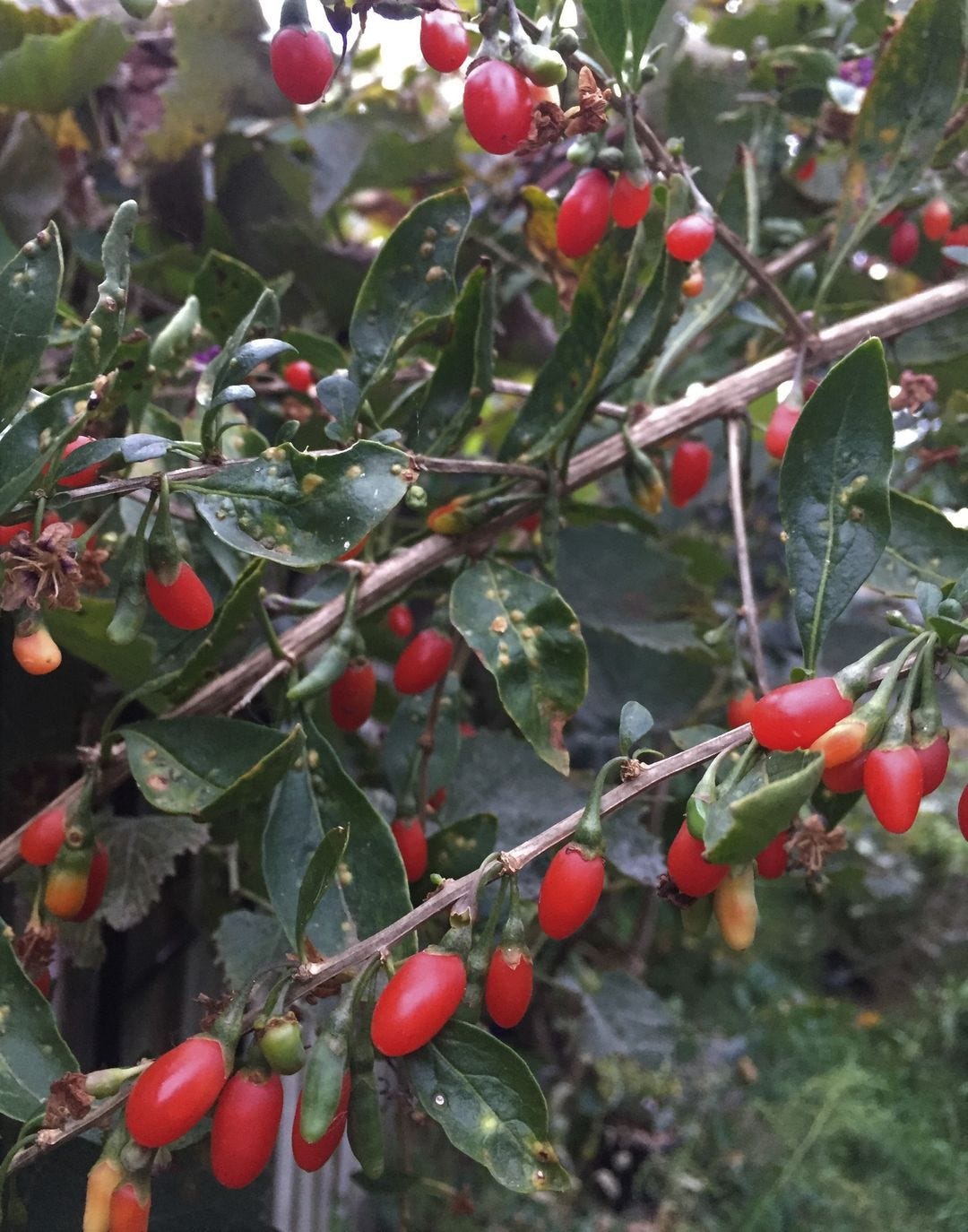
Here is some additional info from a study related to this:
"Goji leaves are herbs that are traditionally used in tea and cuisine and has been recognized as a health food. It has also been found that the extracts of Goji leaves possess multiple pharmacological effects, including antimicrobial, antioxidant, and anti-diabetic effects. However, the comprehensive profiles of biochemical compounds in Goji leaves have only been identified in recent decades. Goji leaves contain high amounts of specific flavonoids and phenolic acids, such as chlorogenic acid, quercetin, and rutin. After comparing the compounds in the fruit, leaves, and root barks of Goji, results indicate that Goji leaves are valuable sources for obtaining chlorogenic acid and rutin. Moreover, Goji leaves also contain polysaccharides that exert high superoxide and DPPH scavenging abilities, therefore having high antioxidative activity."
Black Goji (Lycium ruthenicum)
Black Goji berries are a very rich source of vitamins and minerals.
The health potential of this plant is really amazing as it contains huge amounts of proanthocyanidin or OPC. Procyanidins OPC is one of the most effective water soluble free radical scavenger and it has an efficacy is 50 times that of Vitamin C and 20 times as effective as Vitamin E. The OPC content of Black Goji berry is 3690mg/100 g is the highest in the world even exceeding the blueberry 3380mg/100g.
In the pics below you can see the rich antioxidant content expressed in vivid blue and purple as I add hot water to the dried berries. The image that has a series of pics in it depicts the transformation over about 20 seconds where the hot water is extracting the anthocyanin (expressed as blue-then purple after which I add a few drops of lemon to the cup of Black Goji tea which shifts the PH and changes to color into the pink range.
It also contains large amounts of essential fatty acids, (unusual for fruit), carotenoids, vitamin B1, B2, vitamin C, iron, zinc, selenium, polysaccharides, nicotinic acid, ascorbic acid, sitosterol, linoleic acid, zeaxanthine, amino acids and the alkaloid betaine.
For more info on the many health benefits of black goji berries check out: https://www.vantasty.com/benefits
Lycium Ruthenicum grows wild all throughout central Asia from China to Afghanistan, Russia, Uzbekistan, India and up into the Himalayas. It handles extreme environmental and foraging pressure as well as tolerating unfavorable soil conditions. It is a plant I highly suggest for any avid gardener to begin acclimatizing to become a permanent resident in their garden.
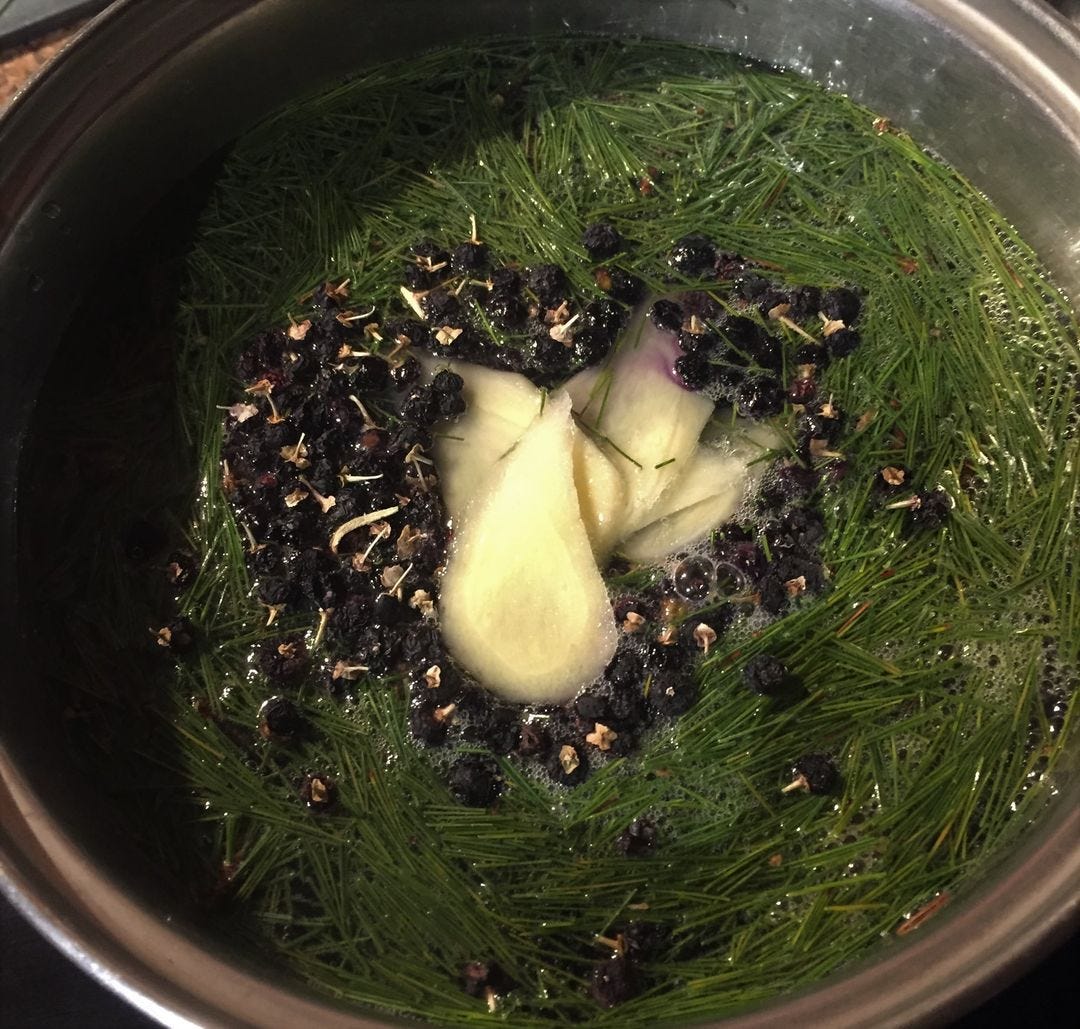
How to Grow, Prune and Propagate Goji Berry Plants
In some areas, they are considered a weed due to their tendency to sucker and spread by seed. Goji berries are self-pollinating, drought hardy, do not require fertilizer, and prefer to grow in any soil with a pH of 6.8 or higher.
Red Goji berries are hardy plants that grow in zones 3-10.
Black Goji berries (Lycium ruthenicum) are also drought tolerant but they grow outside in zones 5-10.
Native pollinators and solitary bees love goji blossoms and I find Tulsi, Bee balm, Anise Hyssop, Peas and Borage to be great companions for boosting pollination rates.
Our goji beds have a pH of 7.4 (I have read some of the natural habitat of Goji berries has a pH of 8.0). Soil that grows blueberries will kill wolfberries. If the pH is too low, a calcium supplement is required. Oyster shells can help for amending the soil and Hard Wood ash is a good option too. There are also other commercial calcium supplements available. Soil type is not critical. Goji berries will grow in clay, sand, or loam however, each soil type has its unique properties.
Light – Goji berries prefer full sun, around 6-8 hours of direct sunlight. They can tolerate partial shade, but will produce less berries with reduced light.
Watering – Keep the soil well-watered and moist in the first year as the plant establishes itself and sends its tap root down into the soil. After the first year, goji berries become quite hardy, drought-tolerant plants that survive well with less frequent watering.
If planting in containers, do not use purchased potting soil. Many potting soils include peat or sphagnum moss, which tends to make the soil too acidic. If available, use a good sandy loam for potting soil.
Goji berries can also be grown as indoor plants near a bright, sunny window that receives midday and afternoon sun, and will fruit. Use a pot around 20cm (8″) wide for this purpose.
If growing from seed Goji Berry seeds can be started indoors approximately 4-6 weeks prior to the last frost of the spring. Once established, it can be tolerant to temperatures down to -15 degrees F, but almost all seeds needs water and some heat to germinate. Sow shallowly to a depth of approximately ¼-1/2" deep, providing plenty of moisture while awaiting germination. Once the start begins to break through the surface of the soil, moderate water.
Cuttings – It’s much easier to propagate goji berries from cuttings in late winter.
Cut a branch that’s ideally as thick as a pencil or thicker, and around 20cm long.
Then, cut the lower end at an angle to identify it as the bottom end and to make it easier to push it into the ground. The end can be dipped into rooting hormone if desired.
Push the cutting into the ground, or into a pot filled with potting mix, so that the lower 2/3 is below the soil, with the top 1/3 above the soil.
Wait till spring and the cutting will root and produce new shoots.
They can also be propagated from softwood cuttings in early spring, using a cut plastic bottle cover to preserve the humidity, as the cutting will have leaves at this time of the year..
If planting bare root stock, place the plants in the ground a little deeper than the soil line on the plant. If you purchase potted plants, carefully remove the plant with all the soil. If the soil clump does not come out of the pot easily, cut the pot off. Again place the plant in the ground a little deeper than the previous soil line.
Do not add nitrogen to the soil. Wolfberries do not like rich soil. As nitrogen levels increase, leaf production increases and fruit production decreases, and if the nitrogen levels get too high, the plants die. This principle is especially important for newly planted bare roots.
Once established, the goji berry plant is very drought resistant, but newly planted starts need to be kept moist. Older plants send down a taproot that can access water deep in the ground; so if the soil looks dry on the surface, this may not mean that the plants need water. It is better to give them a good soaking every few weeks than to water a small amount more often. Sandy soil, with poor water holding capacity, needs watering more often than clay soil.
For field or garden planting, place plants every two feet in the row and make rows at least six feet apart.
Pruning and supporting the Goji Berry Plant
Grown from seed it took us 2 years to see some numerous berries.
Bare root stock planted in early spring should have some fruit the first summer and should reach full production in three years, depending on how they are pruned. The vines of a goji berry plant will get 13 to 15 feet long if not pruned.
One method to prune and support is to use a sturdy post on either side of the shrub with wires across them to tie the stems to works well to accommodate their height and width.
With this single-fence support system, two posts are 1.2m (4’) above the ground, driven 60cm (2’) into ground.
The posts are placed around 1.5-2.0m (5-6′) apart, with 2mm galvanized wire (12 AWG or American Wire Gauge) strung between the posts at 60cm (2′) and 1.2m (4′) above the ground.
Canes are tied to the wires with gardening twist ties, twine or fabric tree tie material.
While the above described system provides for a tidy and efficient Goji cultivation system, it should also be said that our most productive plants are not pruned at all but they get huge and take up a lot of space (we have one with 20 foot long plus vines that I guided to reach up onto our back deck railing for easy snacking).
Winter Pruning
Remove any weak, damaged and crossing branches.
Thin out stems if there are too many arising from the base of the plant.
Remove old, unproductive stems, by pruning them off at the base. Make sure to leave a young new stem as a replacement.
Shorten lateral (side) branches by removing 15-45cm (6-18”) from the tip to promote further branching and production of more new fruiting wood.
Cut back longer branches to manage the size of the shrub.
Summer Pruning
During early summer, pinch off the top 5-7cm (2-3”) of terminal growth (the ends of the branches). This practice known as tipping encourages more lateral (side) branches to form, which produce more fruit than vertical branches growing straight up.
First Year: Generally it is best to let the first year’s growth of a goji berry plant go unpruned. This will maximize root production and give a few more berries the first summer.
Second Year: Select the largest healthy stem of your goji berry plant for a main trunk. Remove any side shoots. When this main stem reaches 16 inches, trim off the tip to promote side branches. During the summer, remove any new shoots that come off the main stem at an angle of more than 45 degrees. Leave three to five side shoots that are growing at less than a 45-degree angle from the stem. If you want a narrow row, leave only side stems that are parallel to the rows. These become lateral branches that will produce fruit and fill in the spaces between the plants. Leave one large, upright shoot near where the main stem was cut off. This shoot will become the third-year main stem.
Third Year: Fall or early winter pruning can be done to clear out unwanted stems from your goji berry plant. Spring and summer pruning is used to control structure and canopy growth. The goal is to prune to maximize first-year shoot production and eliminate second-year growth as most thorns appear on second-year growth. Aim for an umbrella-like canopy of first-year growth. The long-term goal is to have a nicely shaped, self-supporting plant that is about six feet tall, with a three-foot diameter canopy of first-year growth.
Starting about the third year, plants will begin to produce runners around the base of the plant, similar to the way raspberries reproduce. These shoots should be dug up for replanting or used for vegetables.
Goji berry cuttings on first and second year dormant wood root easily if you pot them in soil so this is helpful for propagating new plants to share with friends and neighbors.
Goji Berry Harvesting
Nutrients in both fruit and leaves are not constant. As fruit ripens from orange to red, sugar content increases and B vitamins and calcium content decreases. Fully ripe fruit is less bitter. My preference is to let fruit at the base of a frond become fully ripe and nearly all fruit at least orange in color. Then I pick all the fruit on a frond by the handful. That way there is a mix of nutrients and it is much more efficient than just picking fruit as it is fully ripe. Pick by pulling fruit slightly to the side, rather than pulling straight away from the branches. This produces the least amount of stem remaining on the fruit.
Wash picked fruit in cold water. Fruit with stems still on will float, facilitating stem removal. This is much less work than trying to get stem-free fruit when picking. Washed fruit can be used fresh and will keep well in the refrigerator for a few weeks. For freezing, just put the washed fruit in freezer bags and put into the freezer. I prefer one or two-quart size bags, and fill so that when laid out flat the contents are an inch or less thick. This facilitates quick freezing and when opened, any amount can be easily removed. If in airtight containers, fruit frozen for three years still looks and tastes like freshly frozen fruit.
For drying, place the washed fruit on racks and dry at 105°F or less. Drying takes three or more days and fruit tends to stick to the drying racks. Fruit is dry when it reaches a raisin like consistency. Dried fruit retains its nutrient value for years.
Leaves and young stems can be harvested any time of the year. Heavy spring and summer pruning will promote new stem and leaf growth. Stems for vegetable use should still be totally green and show no woodiness. Newly formed stems six inches or less in length are the most tender. Leaves can be left on the stems and the entire unit can be used as a fresh vegetable, or they can be dried for later use. Leaves and stems dried in a dehydrator at 105°F take less than a day to dry. Dried products should be stored in an airtight container in a cool, dry place. Dried stems and leaves can also be powdered in a blender.
Leaves for vegetables or tea can be picked throughout the growing season. If growing plants for both fruit and leaves, the best time to harvest the leaves is late in the fall after nearly all the fruit has been harvested and before the first heavy frost. Wearing a leather glove facilitates harvesting the leaves and helps prevent getting stuck by thorns. To strip the leaves, grasp the base of the stem with a gloved hand and pull up the stem. This will strip all the leaves off the stem. Leaves may be used fresh, dried or powdered. Leaves for drying should be immersed in cold water, washed and drained and then placed on drying racks.
Goji Berries In The Kitchen
Both fresh and dried leaves and berries can be used in a multitude of ways, including appetizers, salads, main dishes, soups, breads, muffins, cookies, breakfast foods, desserts, and beverages.

You can cook with dried goji berries in both sweet and savory recipes. The easiest way to get started is to use dried goji berries the way you would use raisins. That means putting them in baked goods like cookies, on top of your morning oatmeal or porridge, in trail mix, or by the handful as a snack.
Here are some recent recipes that I used our goji berry harvests in:
Garden Minestrone Soup
I have always loved minestrone soup over since my childhood as my mom was a great soup maker. When her homemade version was not available I would go to the grocery store to try and find a facsimile but it was never the same. Thus, minestrone was one of the very first soups I taught myself to make in my youth and I have been improving on my recipe ever s…
Adaptogenic Super Taco Mix
I love Mexican food (well I love a lot of food with cultural roots south of the US border going all the way down to traditional Incan territory really) so I have been experimenting with combining my passion for making tacos, burritos, enchiladas, fajitas and heuvos rancheros with my more recently acquired knowledge of
Jeweled Tabbouleh with Ancient Grains and North African Spices
This salad is a refreshing way to enjoy many nourishing and innate immune system optimizing whole foods into a vibrant and delicious meal.
The basic recipe for Mead from an earlier version of my book: https://archive.org/details/47051023-300007750847640-6402891142697844736-n-1/47192921_300004317514650_4223459719768965120_n%20%281%29.jpg
Here are 5 more ideas to Use Goji Berries
1. Blend Up a Superfood Smoothie Bowl. You can never go wrong with a refreshing smoothie that provides you with a ton of nutrients! A goji berry smoothie bowl is a super-nutrient packed treat that’s suitable as a breakfast, meal, snack, or healthy dessert to energize you throughout the day. Just them up with other seasonal fruit of your choice, unsweetened soymilk, and chia seeds, then top it with granola, seeds, nuts, coconut and more fruit. Check out this smoothie bowl recipe for inspiration—just add goji berries in the blend, and topping.
2. Pack up a Healthy Goji Granola Mix. One of the best ways to use goji berries in cooking is by making home-made granola mixes that can be tailored to your liking. You can mix together raw walnuts, pecans, pumpkin seeds, unsweetened dried coconut, dried goji berries, cacao nibs, oats, and chia seeds, then bake them into a golden, delicious granola. The best part about making home-made granola is that you can add as many ingredients as you like.
3. Toss Up a Really Fresh Salad. Goji berries make a great addition to refreshing, nutritious salads, which can be made sweet or savory. Here’s a simple recipe:
Goji Avocado Walnut Citrus Salad
Toss together:
4 cups greens
1 avocado, sliced
1 orange (i.e., blood orange, valencia), peeled, sliced
½ cup walnuts
½ cup fresh or dried goji berries
Drizzle with:
1 tablespoon extra virgin olive oil
½ lemon, juiced
Sprinkle with:
¼ teaspoon sea salt
¼ teaspoon fresh cracked peppercorns
4. Bake Gojis into a Treat. You can whip up a sweet treat by incorporating them into a muffin. Just swap out the blueberries in a typical recipe—or your own favorite blueberry muffin recipe—for fresh or dried goji berries, and you’re all set. You can also use this strategy for other baked recipes, such as cobblers, bars, and crumbles. Swap out blueberries, raspberries, or blackberries in any baked good recipe for these little gems.
Goji Berry Balls
Four power-packed ingredients and a whole lot of flavor. That’s what’s in these healthy and delicious goji berry balls.
Made with goji berries, dates, cashews, and cacao nibs these energizing balls make great snacks. They’re chewy, sweet, and very satisfying.
They are also very simple to prepare. So, you can have them whenever you need a little pick-me-up.
Additional ideas for enjoying your goji harvest in the kitchen: https://insanelygoodrecipes.com/goji-berry-recipes/
Other unconventional ways to enjoy your goji harvest in the kitchen and in the medicine cabinet:
SKILLET WOLFBERRY MUFFIN
2 eggs
1/3 cup olive oil
2 teaspoons lime juice
1 1/2 cups whole-wheat flour (or amaranth flower)
1/2 cup freshly ground flax seed
1/3 cup maple syrup
1 tablespoon baking powder
1 teaspoon orange zest
3/4 cup dried wolfberries
1/2 cup ground walnuts
Preheat oven to 350°F.
Beat eggs until fluffy. Slowly beat oil into eggs. Then beat in lime juice. In another bowl combine remaining ingredients. Then slowly stir the dry mixture into wet mixture. Pour batter into a seasoned, cast iron skillet. Bake 30 minutes at 350°F. Cool slightly before serving. Serve with butter, honey, or jam.
Goji Berry Infused Fermented Ghost Pepper Hot Sauce:
The ingredients shown below are added to a jar and fermented at room temp for at least two weeks in a salt brine made with 3 teaspoons of salt dissolved per 500 ml of water. After fermented the solids are blended to make a super-nutritious, fiery probiotic rich condiment that can be stored in the fridge for up to 6 months.
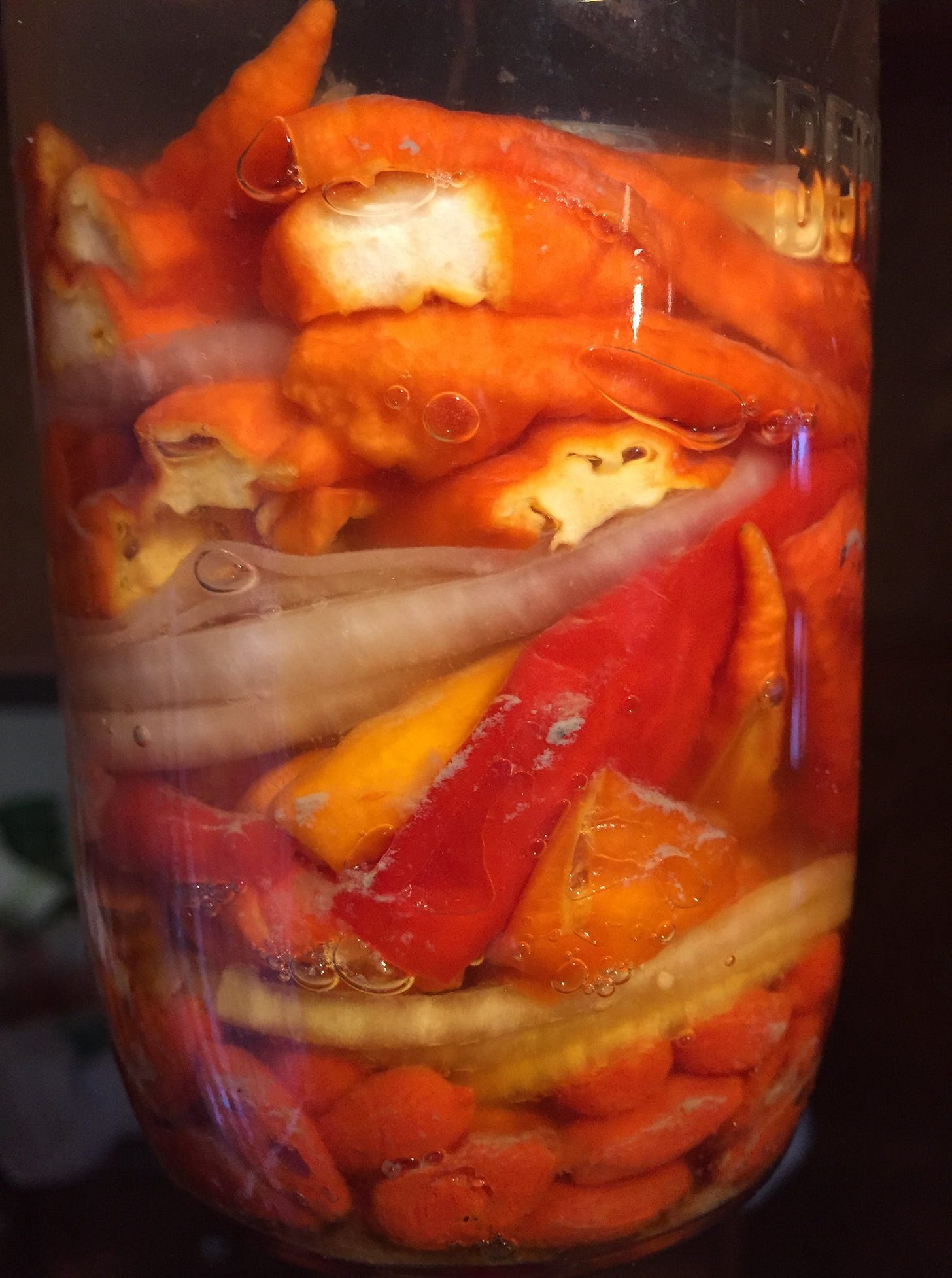
The resulting sauce is glowing orangy-red, it begins with bright warm flavors that smolder into 'sweet smokey embers' that linger for a few minutes after each taste. There are notes of citrus in the background and a distinct floral layer to the flavor. The heat is strong.. but well rounded, it starts slow, building and then glowing like the embers of a well tended camp fire at the end of the evening.
Goji Berry infused honey and Goji Berry fermented honey
This method of preservation and enhancement of Goji nutrition and flavor. It allows us to have access to the medicinal benefits and flavors offered by these super-berries year round (with minimal effort).
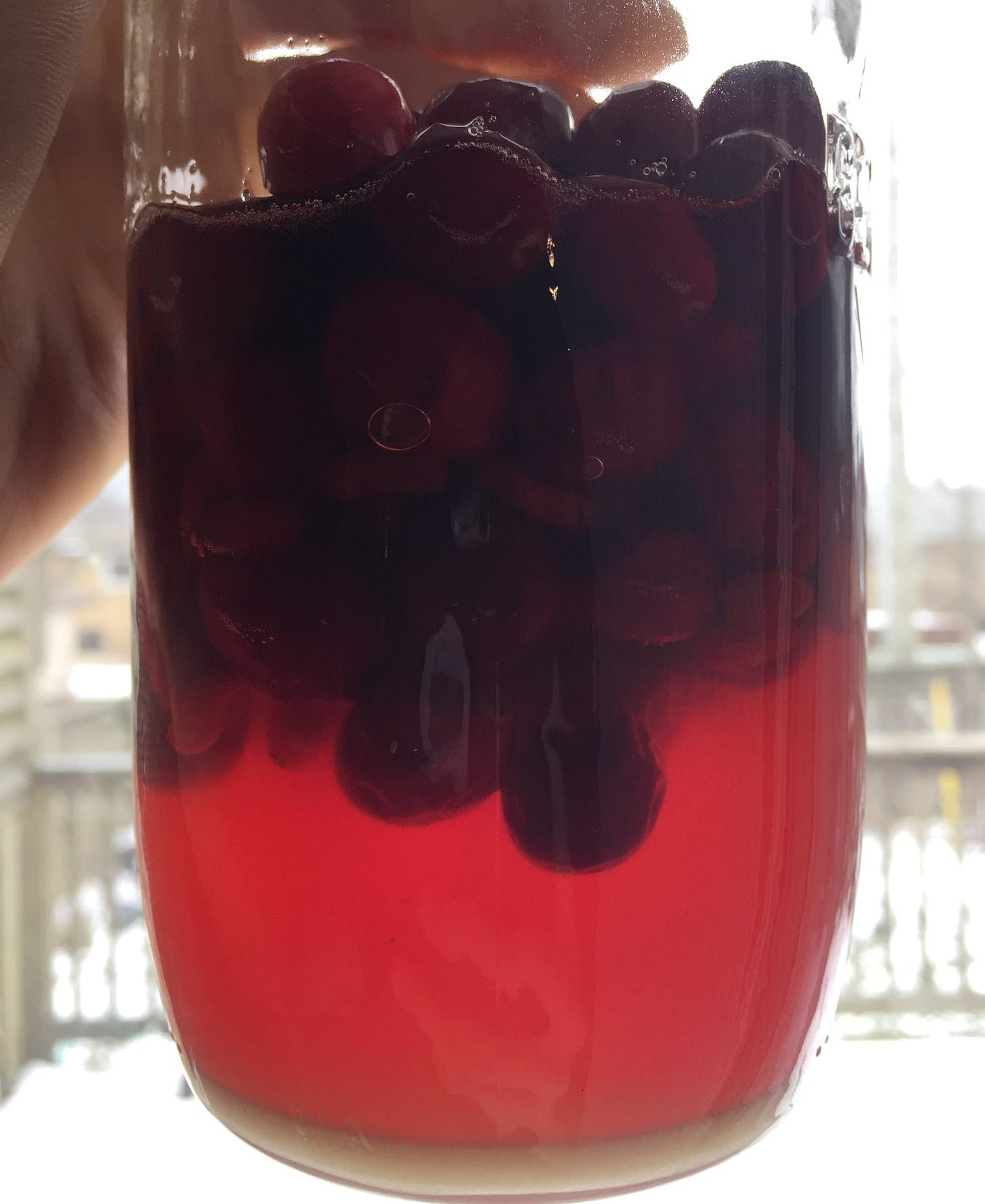
You can use dry or fresh berries for 'fermenting' in honey but if you use dry be sure to rehydrate them (by adding about 1/4 cup of water to half a cup of dried berries and either leaving on counter in a zip lock bag, flipping over several times for a couple hours or just leaving in the fridge overnight) before adding the honey and berries to your fermentation vessel to begin fermenting.

We will use this flavorful antioxidant rich honey to decorate and flavor various recipes and also as an additive for medicinal preparations like 'elixirs' (honey mixed with medicinal tinctures/extracts)
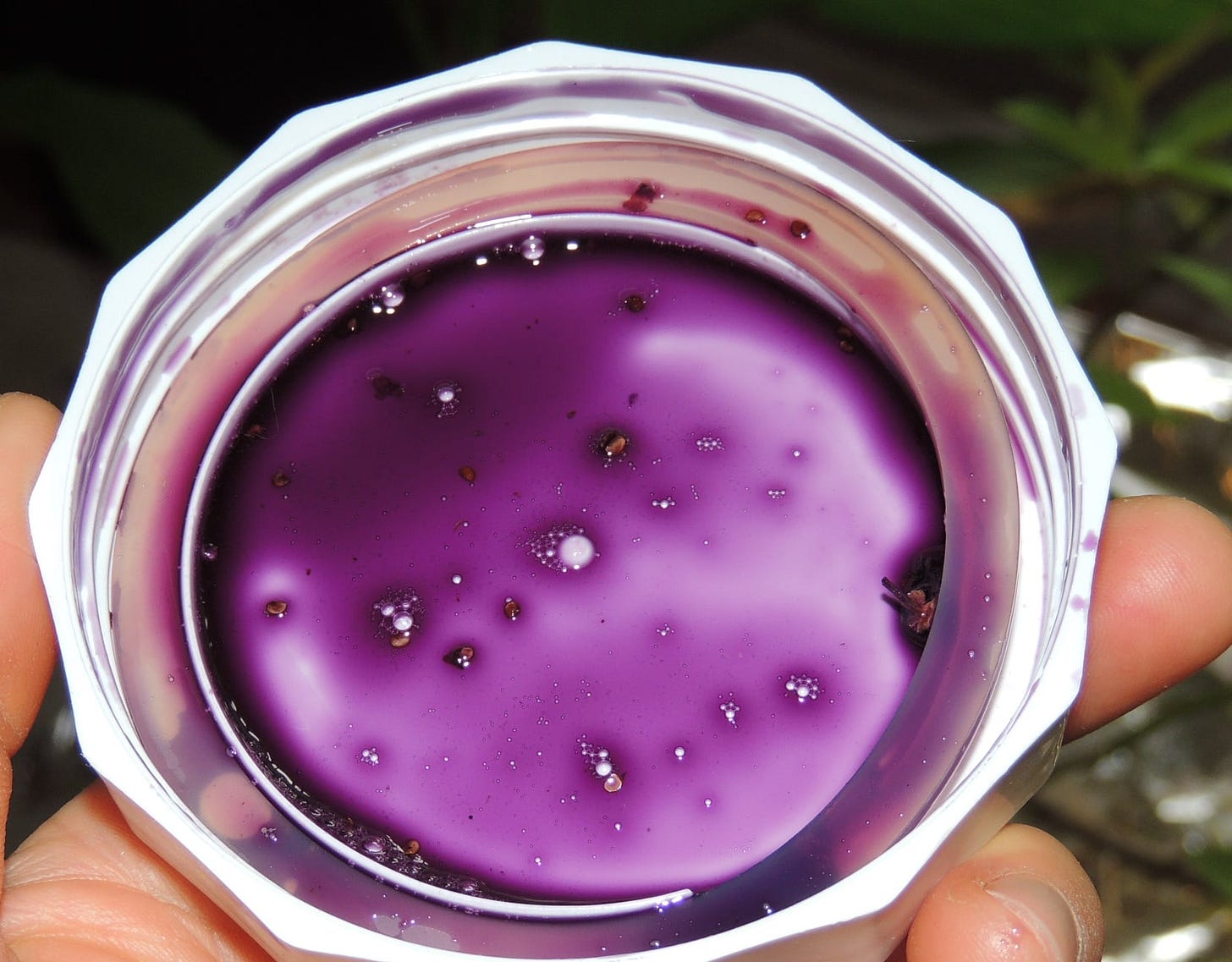
You can also use Goji berries to make delicious fermented beverages like Kombucha, Mead or wine. Goji Mead is great because it allows you to extract and store the rich antioxidants present in goji berries in a shelf-stable (delicious) format for years.
Additional studies and data related to Goji Berry leave and fruit nutrition and cultivation:
- https://bmcnutr.biomedcentral.com/articles/10.1186/s40795-020-00351-w?fbclid=IwAR2Uo9mzyv3XB_R859LJwzdomqSzd6jb7FQMgI7_rOZdX_mAU2qxzsi7Rwc
- https://link.springer.com/article/10.1007%2Fs11130-009-0128-x
- https://bmcchem.biomedcentral.com/articles/10.1186/s13065-017-0287-z
- https://www.semanticscholar.org/paper/Medicinal-and-nutraceutical-uses-of-wolfberry-in-in-Chang-Ho/84ad4694613114e9592b5f388346e9204c040048?p2df
- https://www.tandfonline.com/doi/abs/10.1080/10408398.2017.1422111?journalCode=bfsn20
- https://viriditasherbalproducts.com/custom/uploads/2021/04/Wolfe_SUPERFOODS.pdf
- https://edis.ifas.ufl.edu/publication/HS1391
- https://www.lsuagcenter.com/profiles/truffin/articles/page1529524613219
- https://www.mdpi.com/1420-3049/24/8/1585
- https://www.tandfonline.com/doi/full/10.1080/14756366.2016.1243535
- https://linkinghub.elsevier.com/retrieve/pii/S002196731000587X
- https://www.sciencedirect.com/science/article/abs/pii/S002196731000587X?via%3Dihub
- https://e-nrp.org/DOIx.php?id=10.4162/nrp.2011.5.5.412
- https://www.sciencedirect.com/science/article/abs/pii/S0963996913005450?via%3Dihub
- https://www.thieme-connect.de/products/ejournals/abstract/10.1055/s-0029-1186218
- https://onlinelibrary.wiley.com/doi/10.1111/j.1745-4514.2010.00429.x
- https://www.sciencedirect.com/science/article/abs/pii/S0024320506001226?via%3Dihub
- https://link.springer.com/article/10.1007%2Fs12161-017-1098-5
- https://www.sciencedirect.com/science/article/abs/pii/S0308814616314480?via%3Dihub
- http://union-sure.com/nutrition-goji-berry-leaves/
- http://www.phoenixtearsnursery.com/health-benefits-of-wolfberries.html
- Montesano D, Rocchetti G, Cossignani L, Lucini L, Simonetti MS, Blasi F. Italian Lycium barbarum L. berry: chemical characterization and nutraceutical value. Nat Prod Commun. 2018;13(9):1151–6.
- Huang MY, Hsu MH, Huang WD, Chen PJ, Chang YT, Chao PY, Yang CM. Differential contribution of antioxidants to antioxidative functions in galls evaluated by Grey system theory. J Grey Syst. 2012;4(4):359–70.
I hope you found this information helpful and empowering and will try growing some of your own Goji Berries at home.
Considering how nutrient dense the food and medicine Goji Berry plants produce is (and considering how drought tolerant and non-demanding this plant is for cultivation) I consider the Goji berry to be a powerful ally for those seeking to create viable decentralized food production systems for cultivating health sovereignty.
Wishing you all many bountiful harvests, health and longevity.
Happy seed starting everyone!





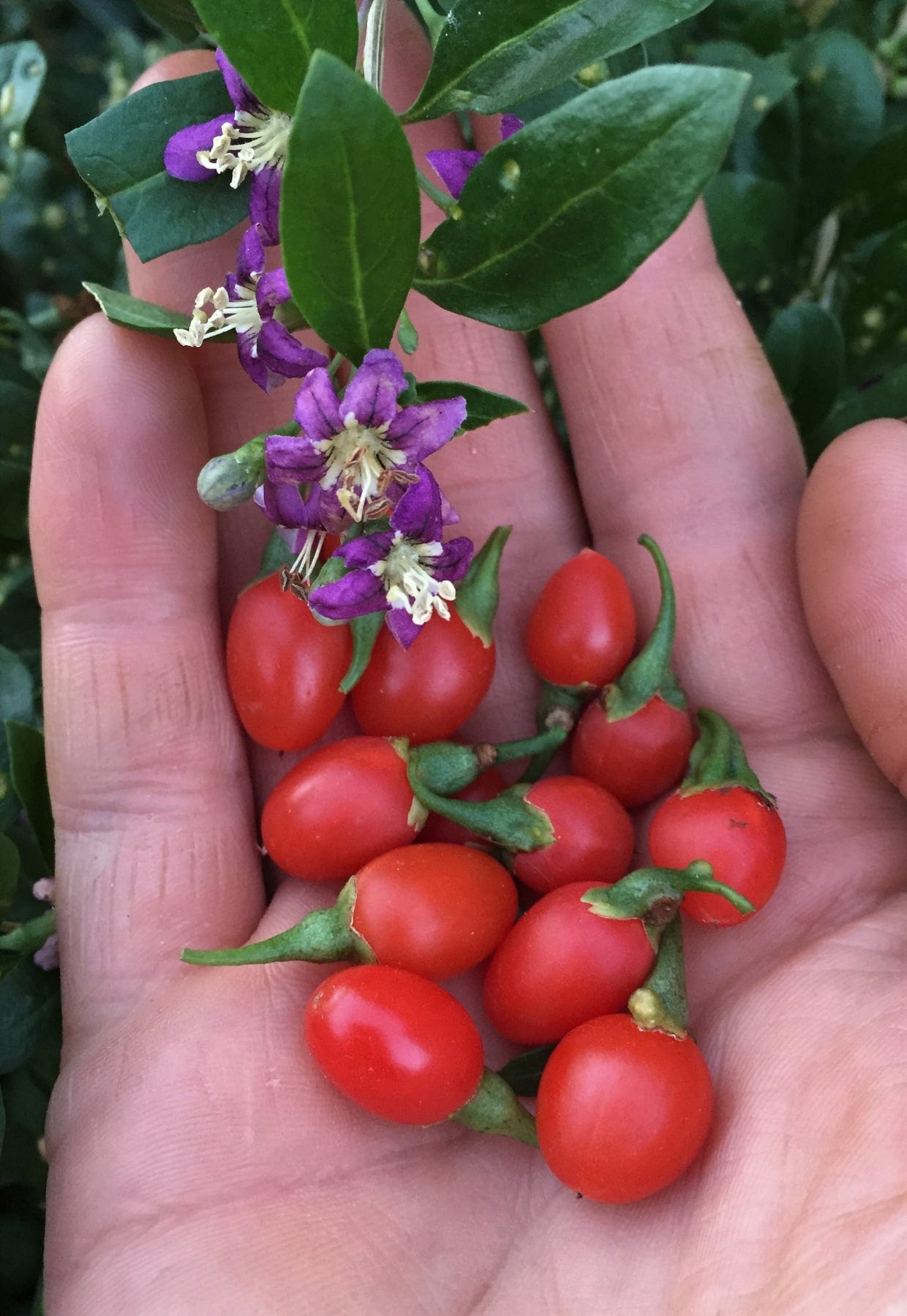
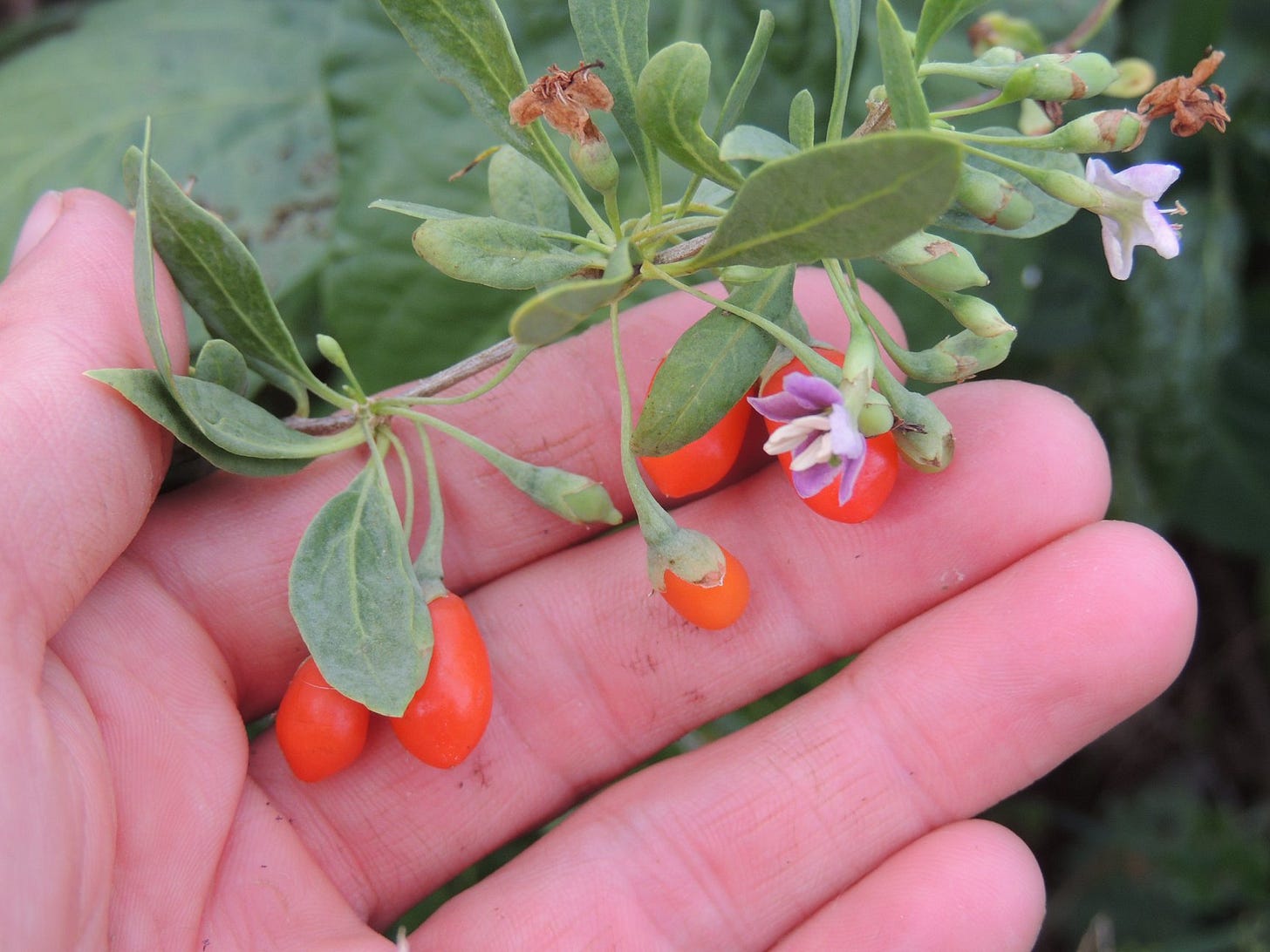
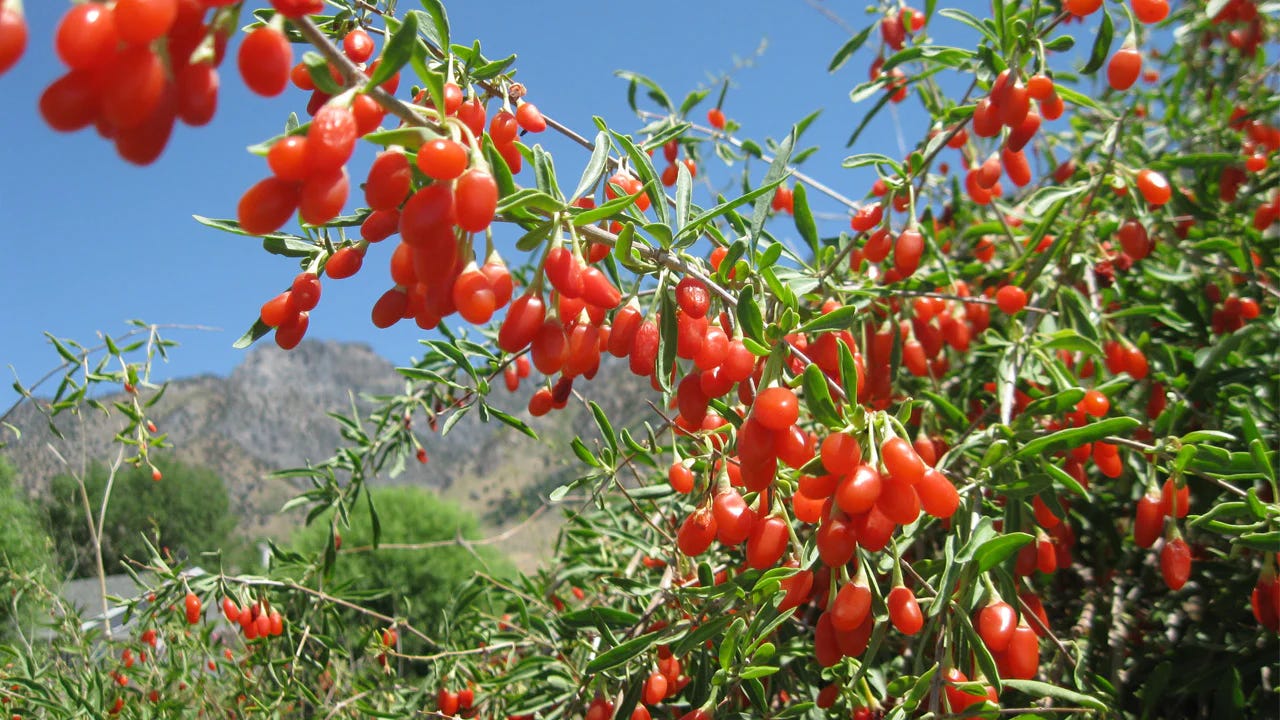
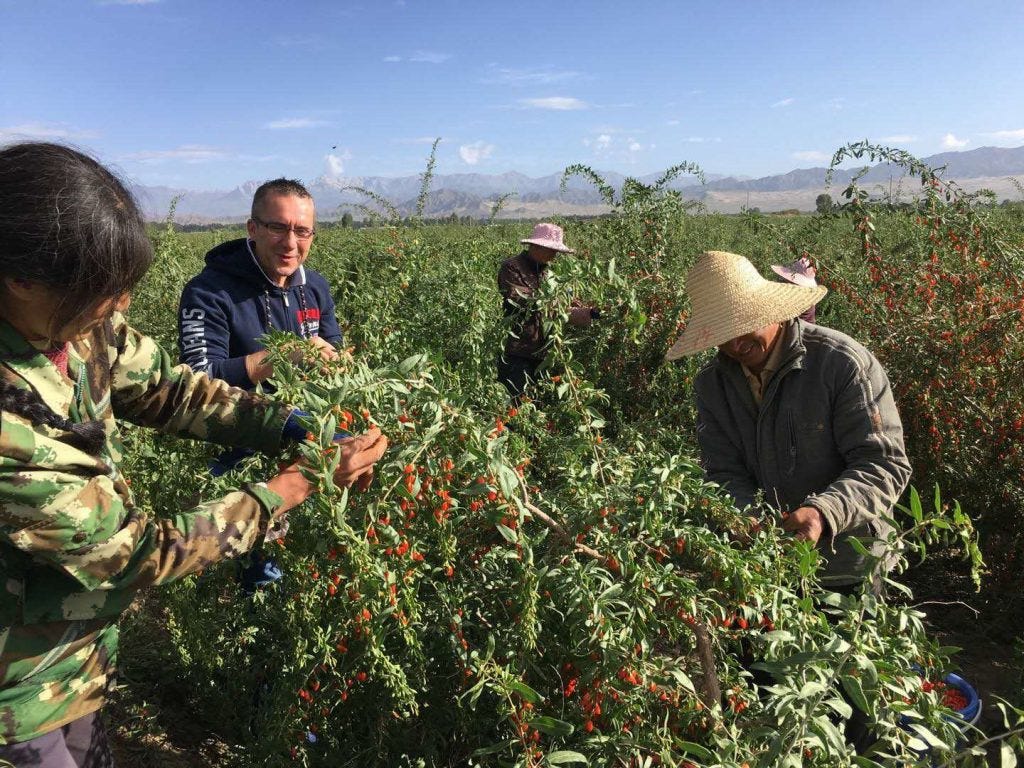

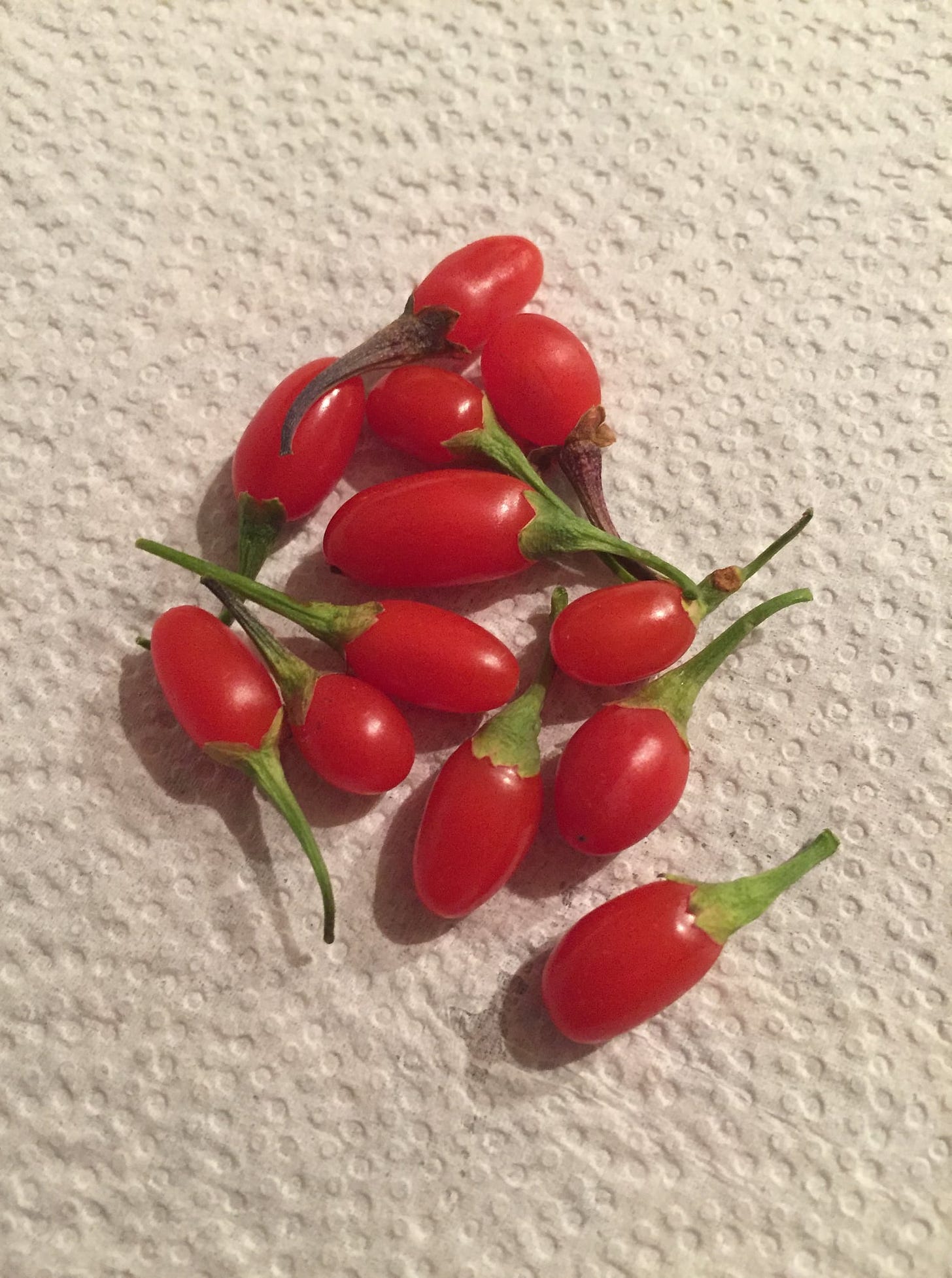
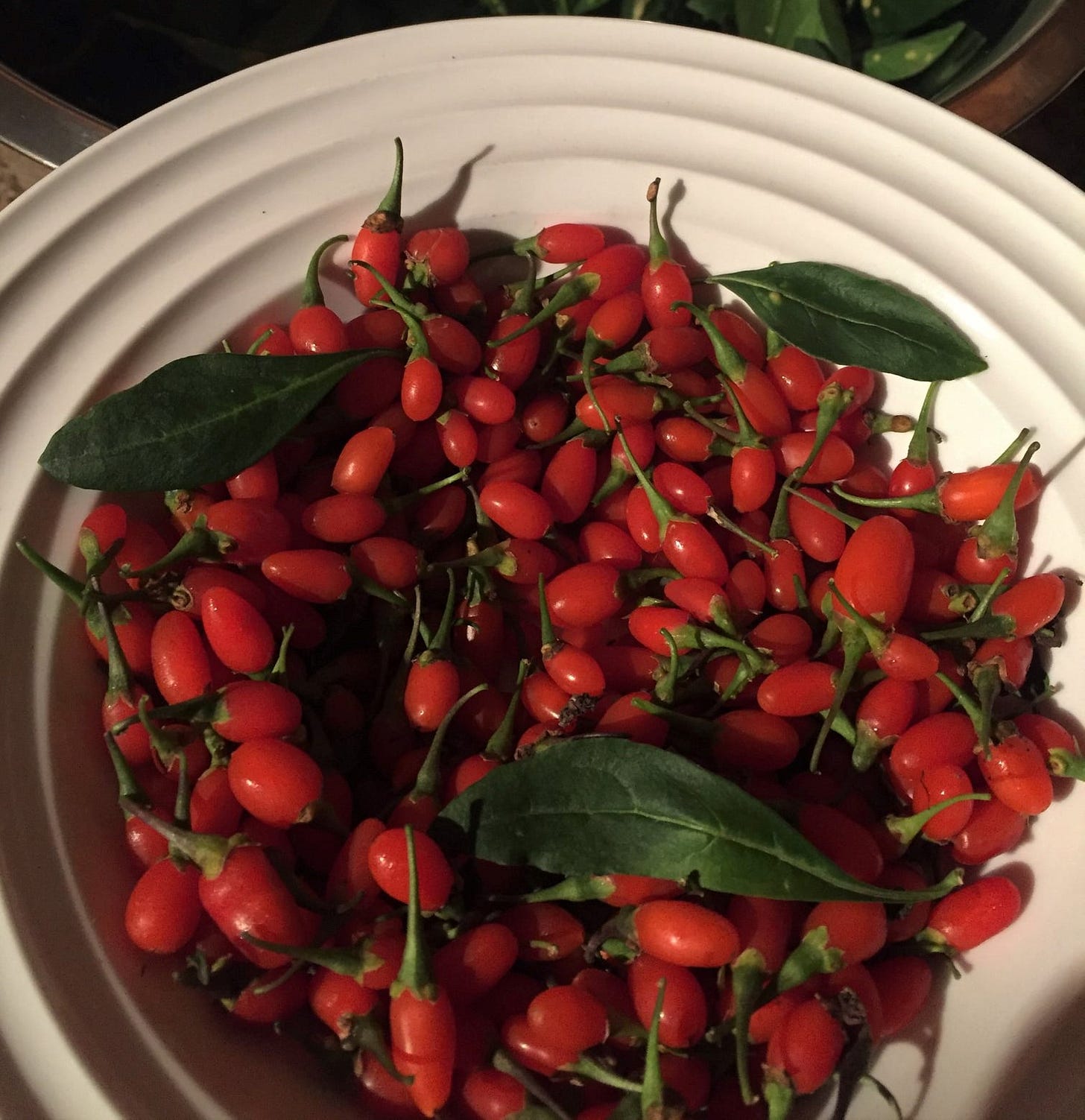
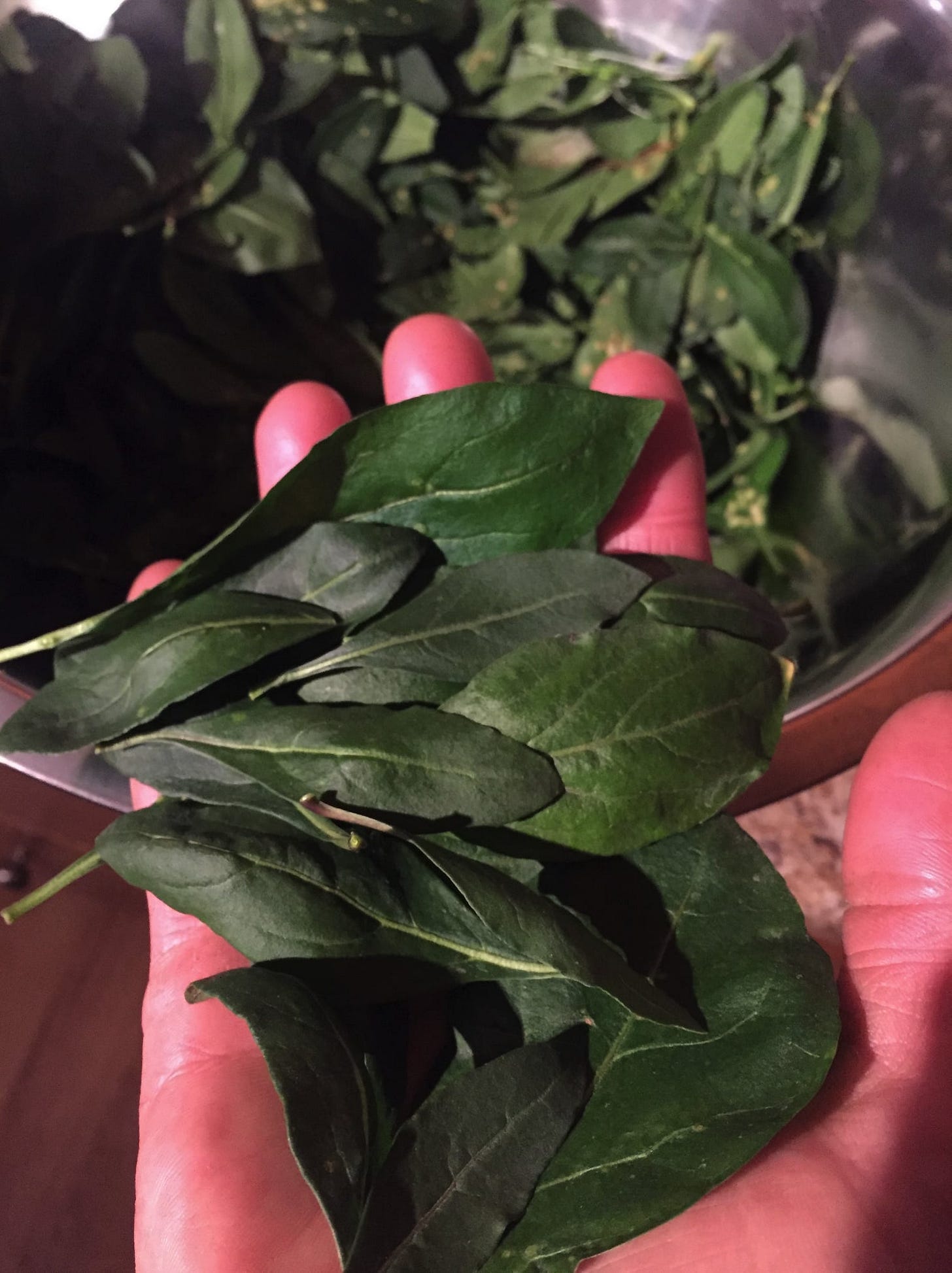
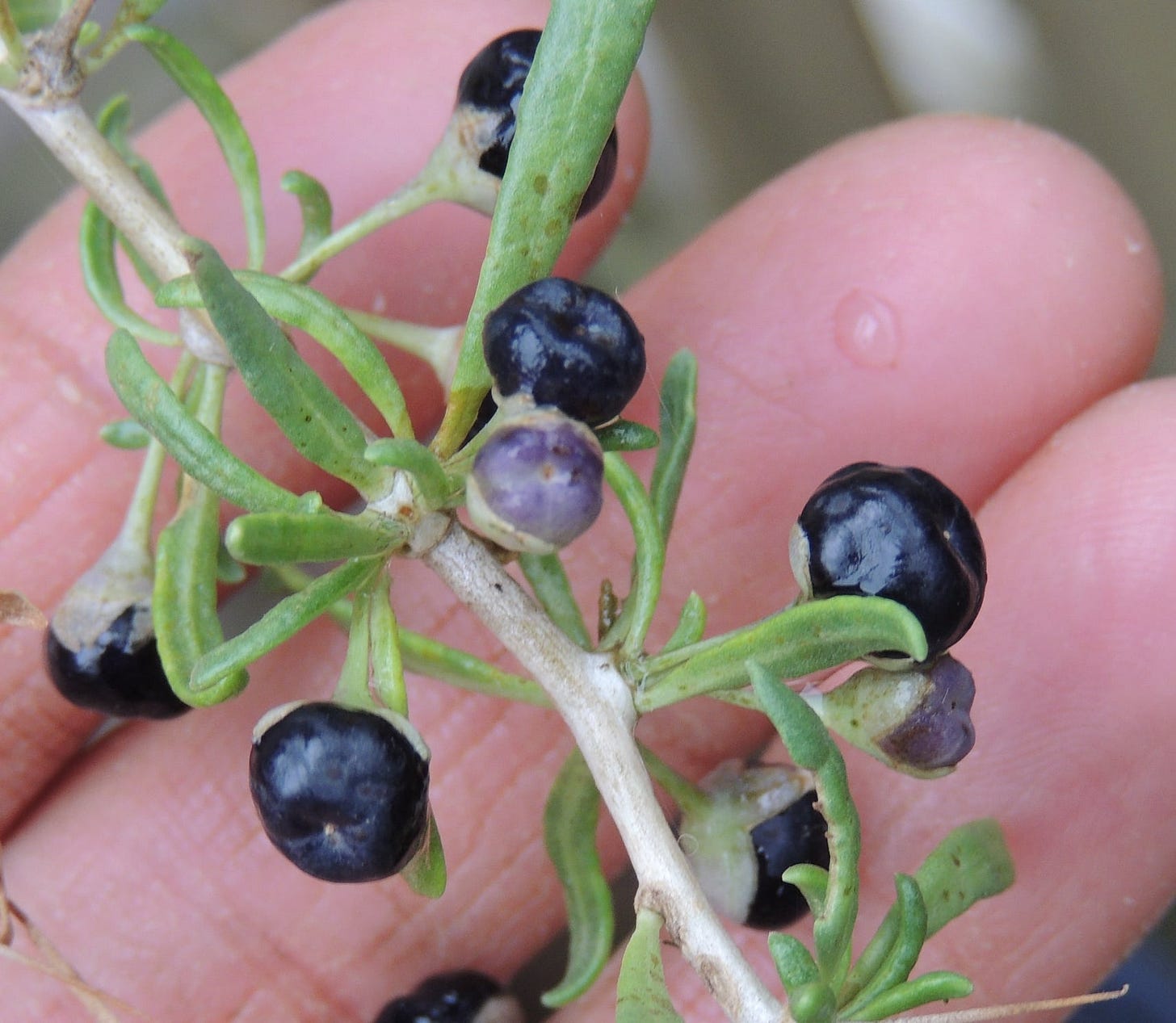
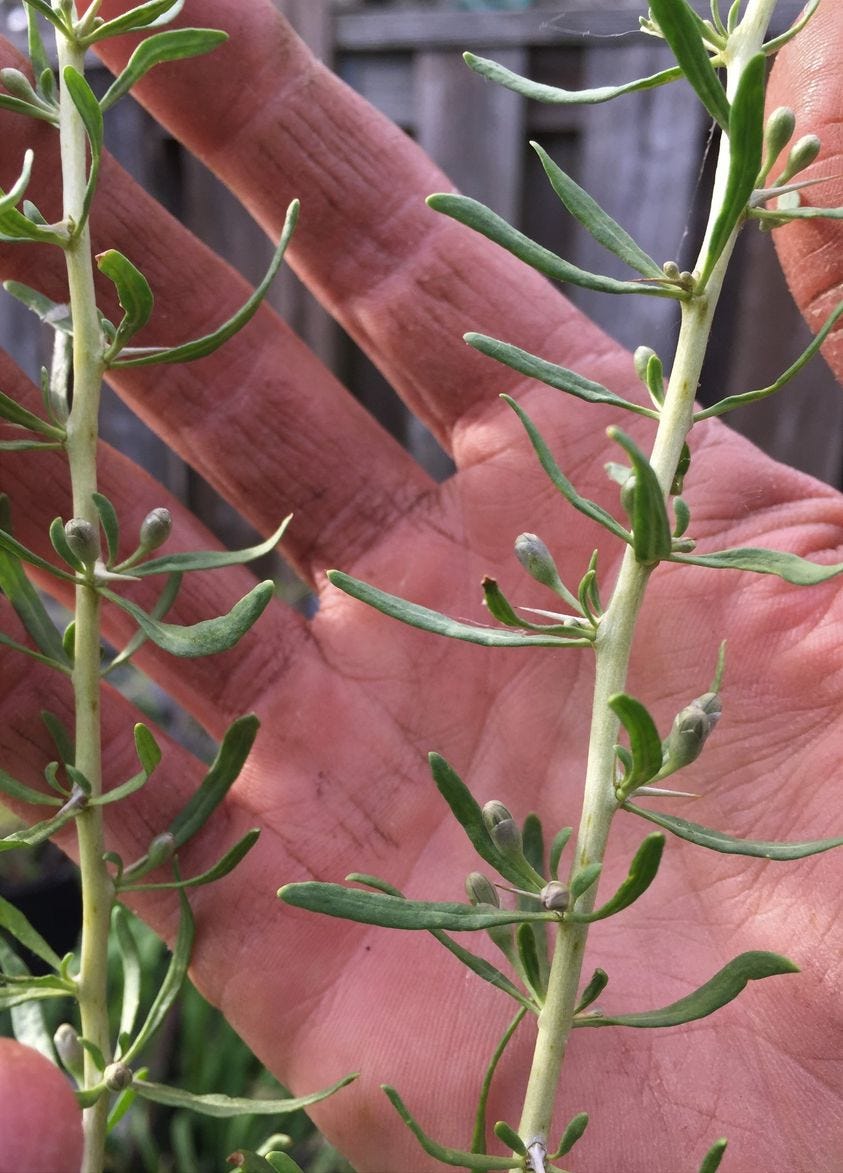
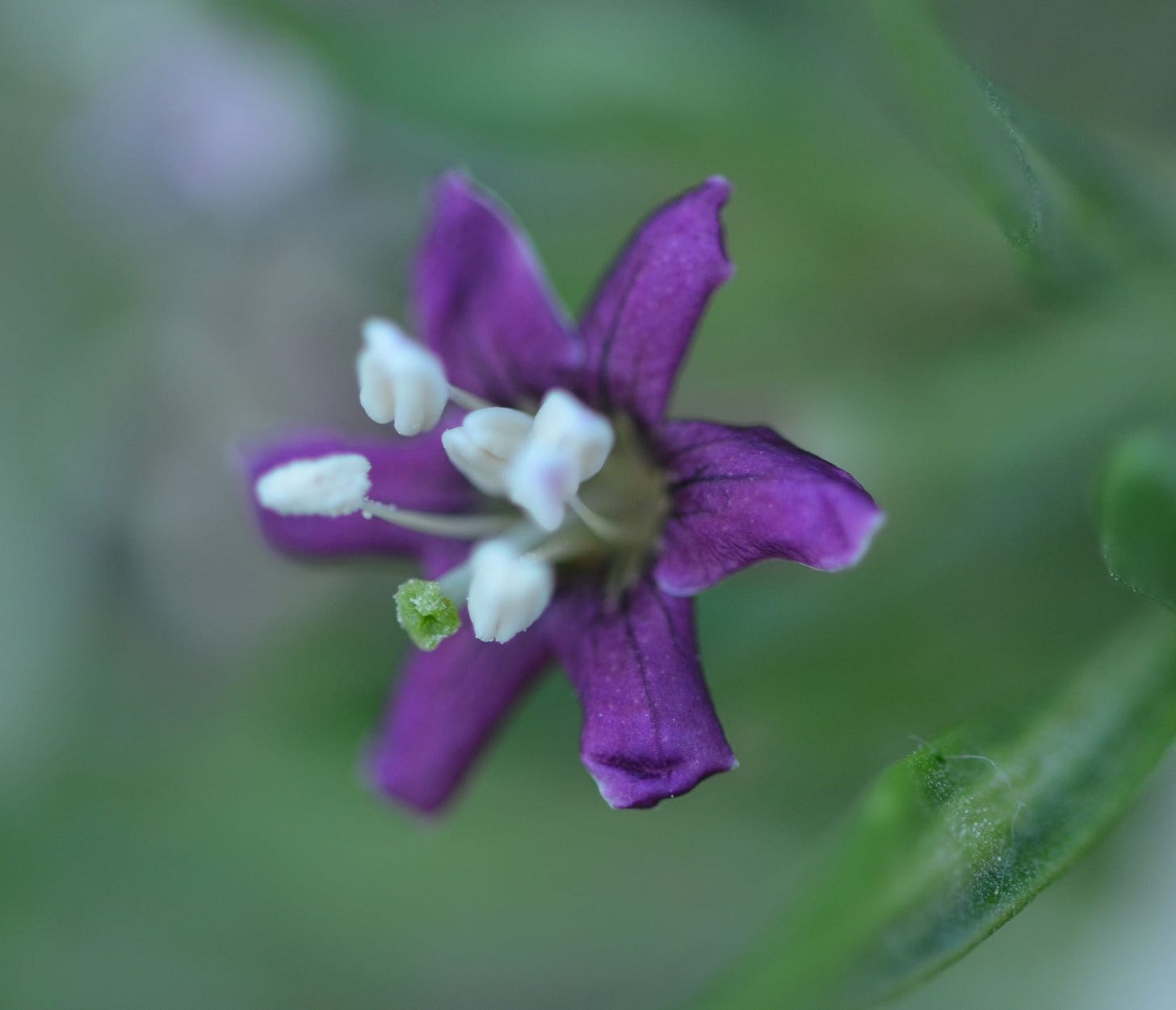
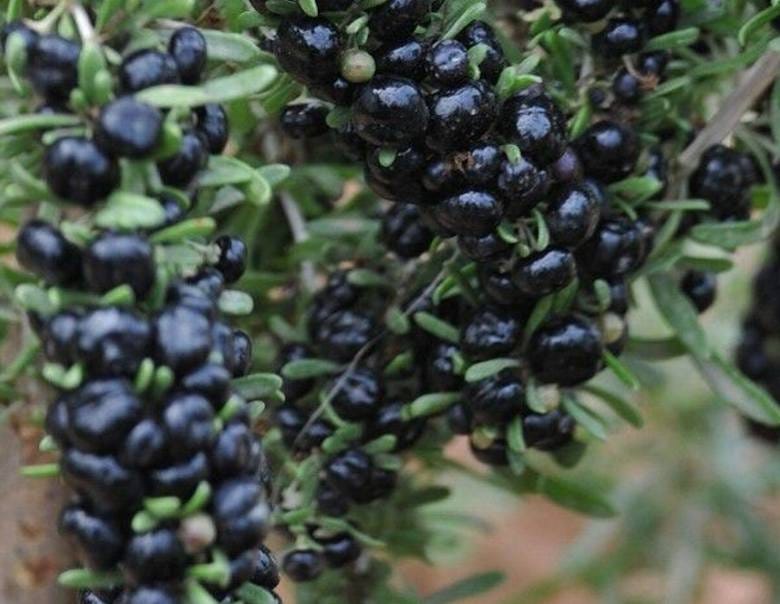
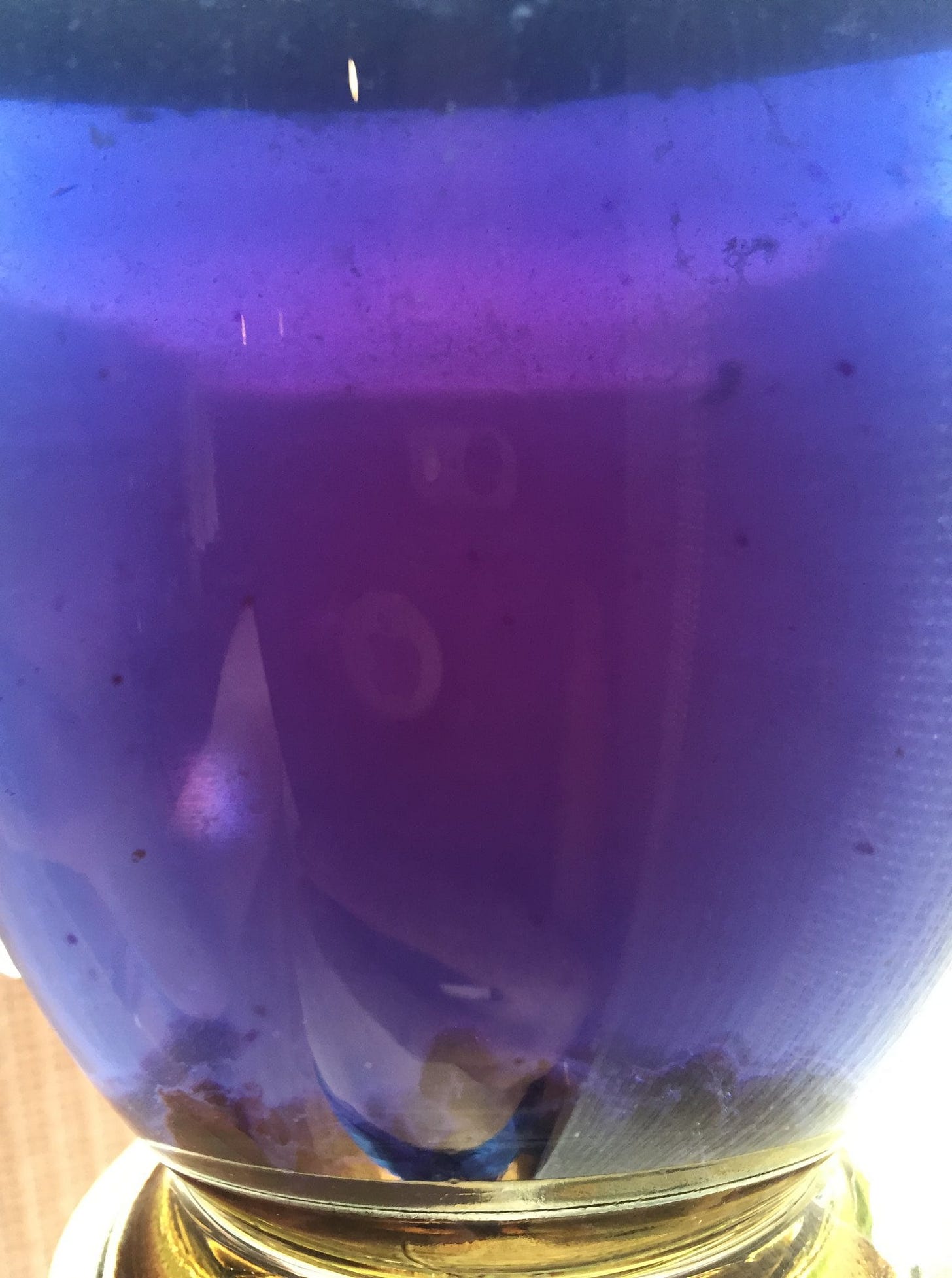
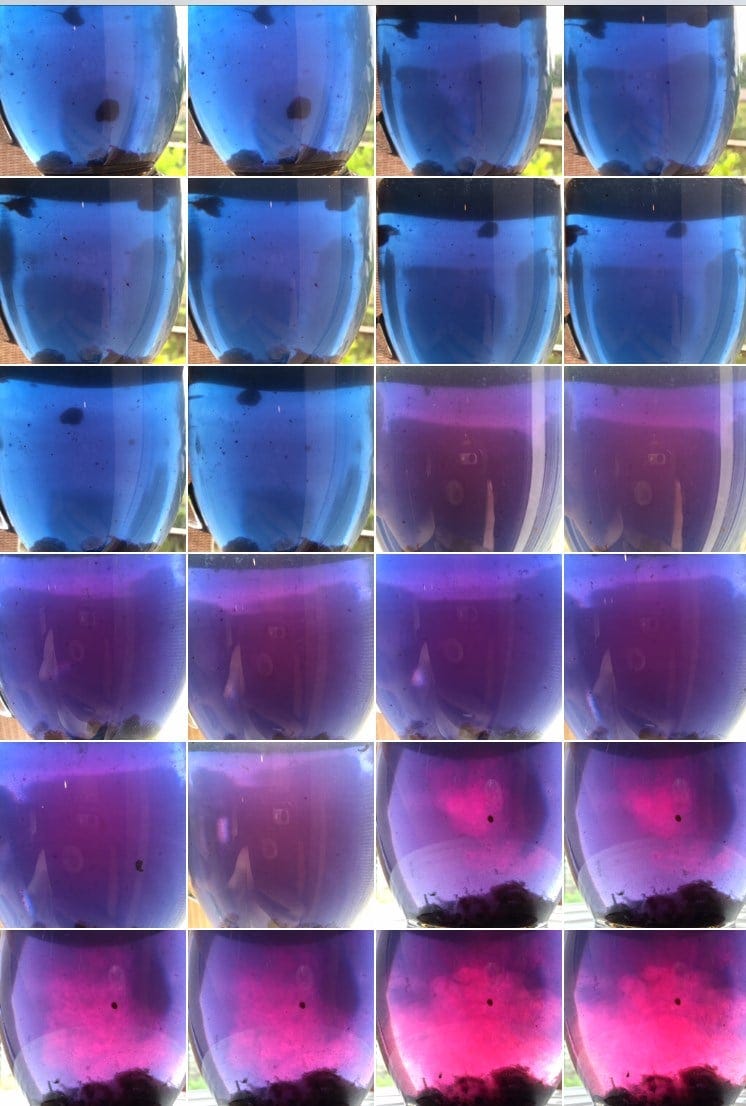

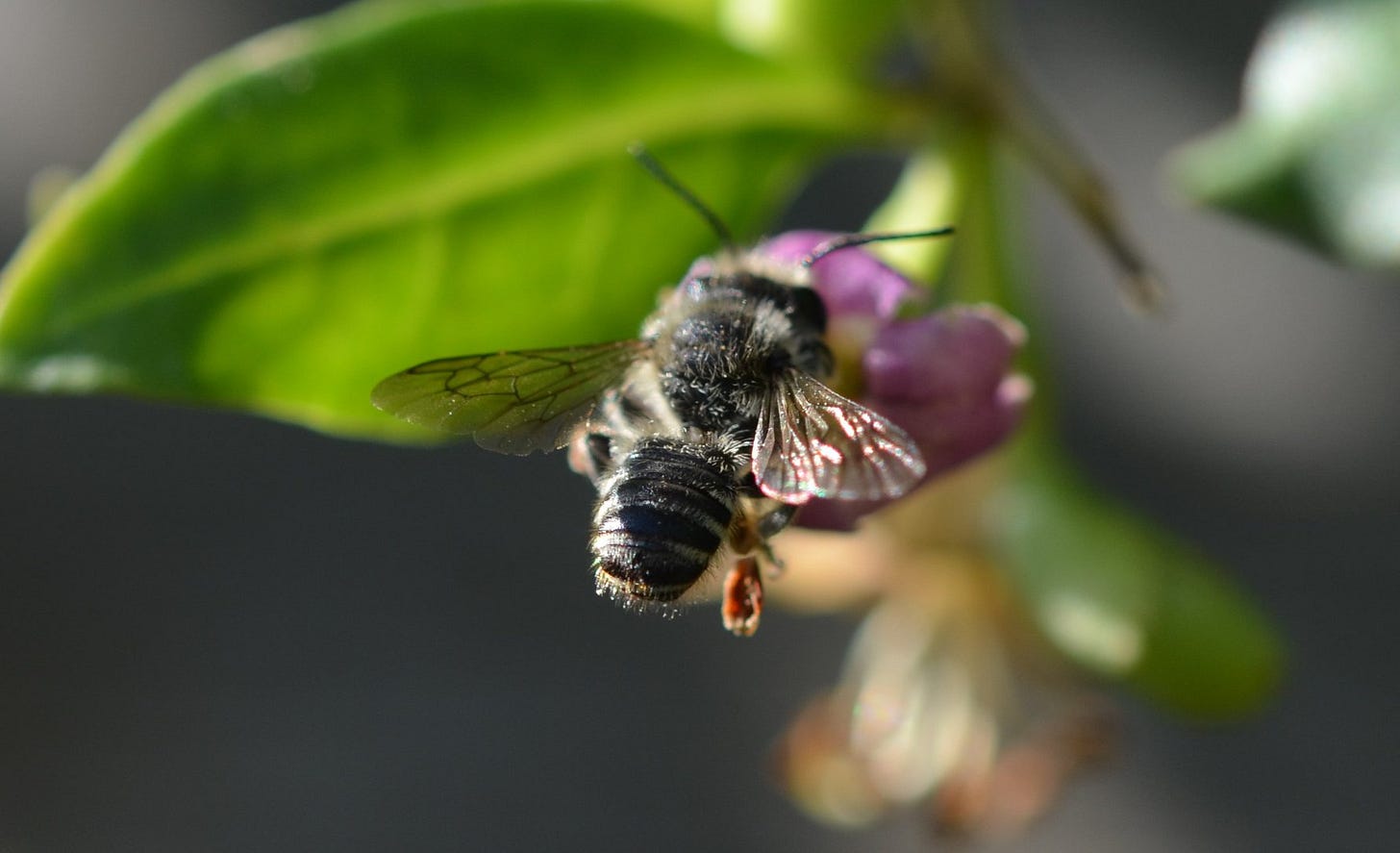

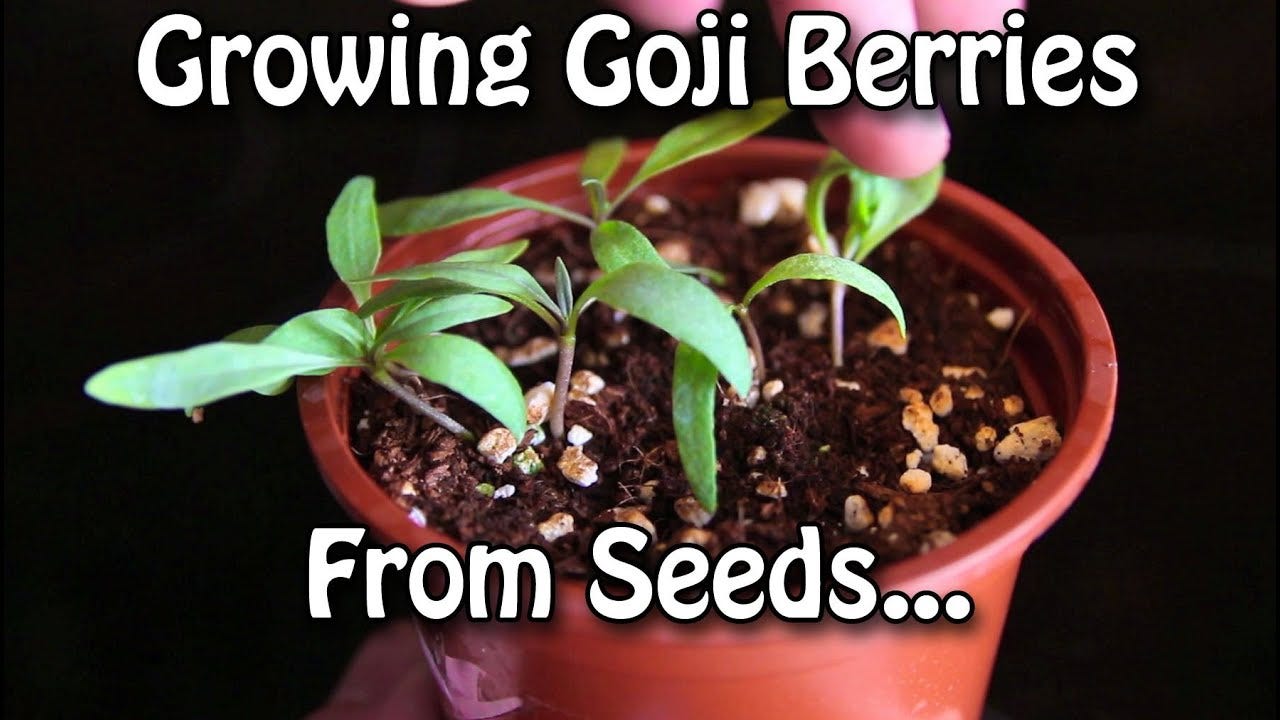
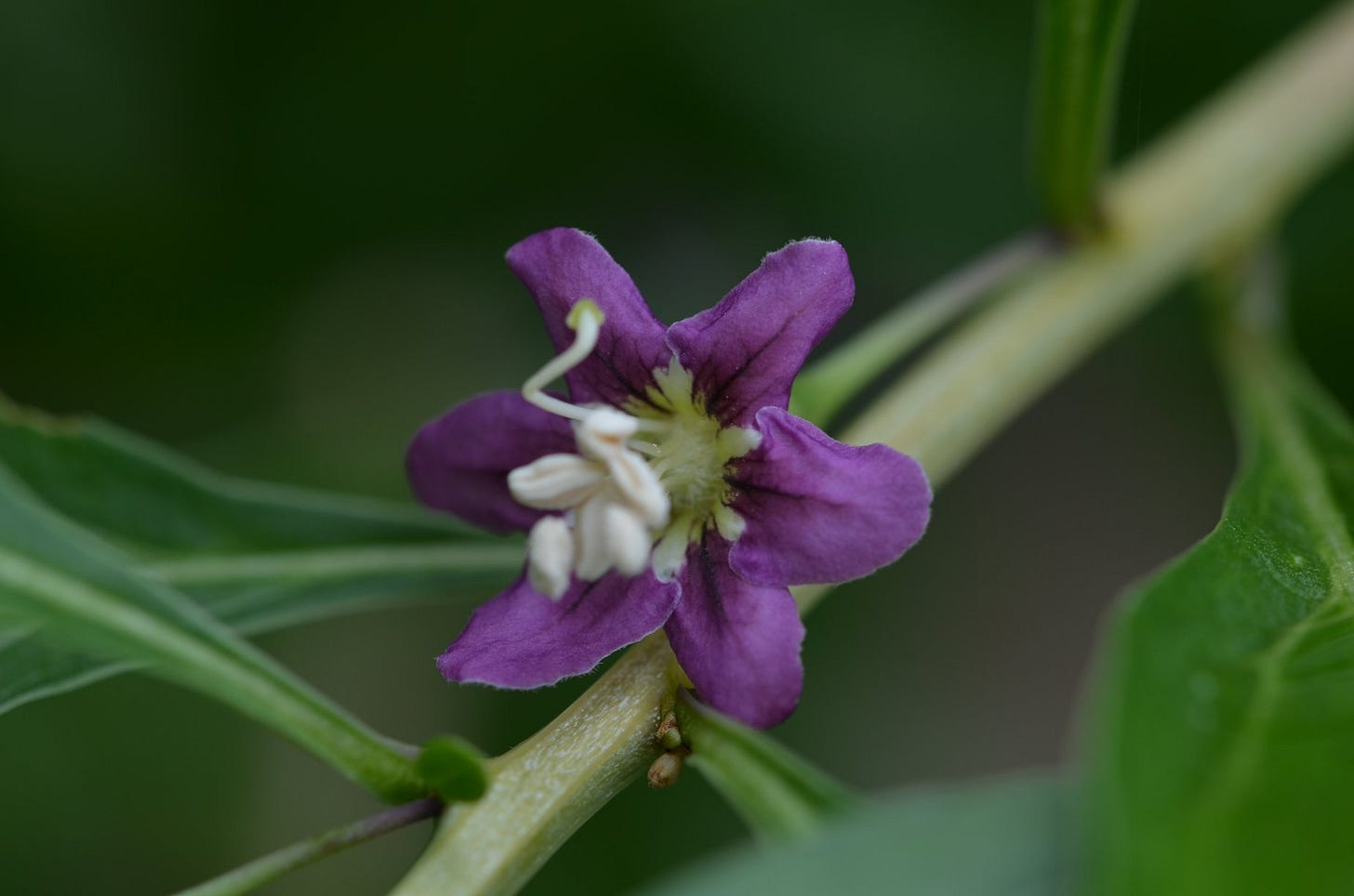
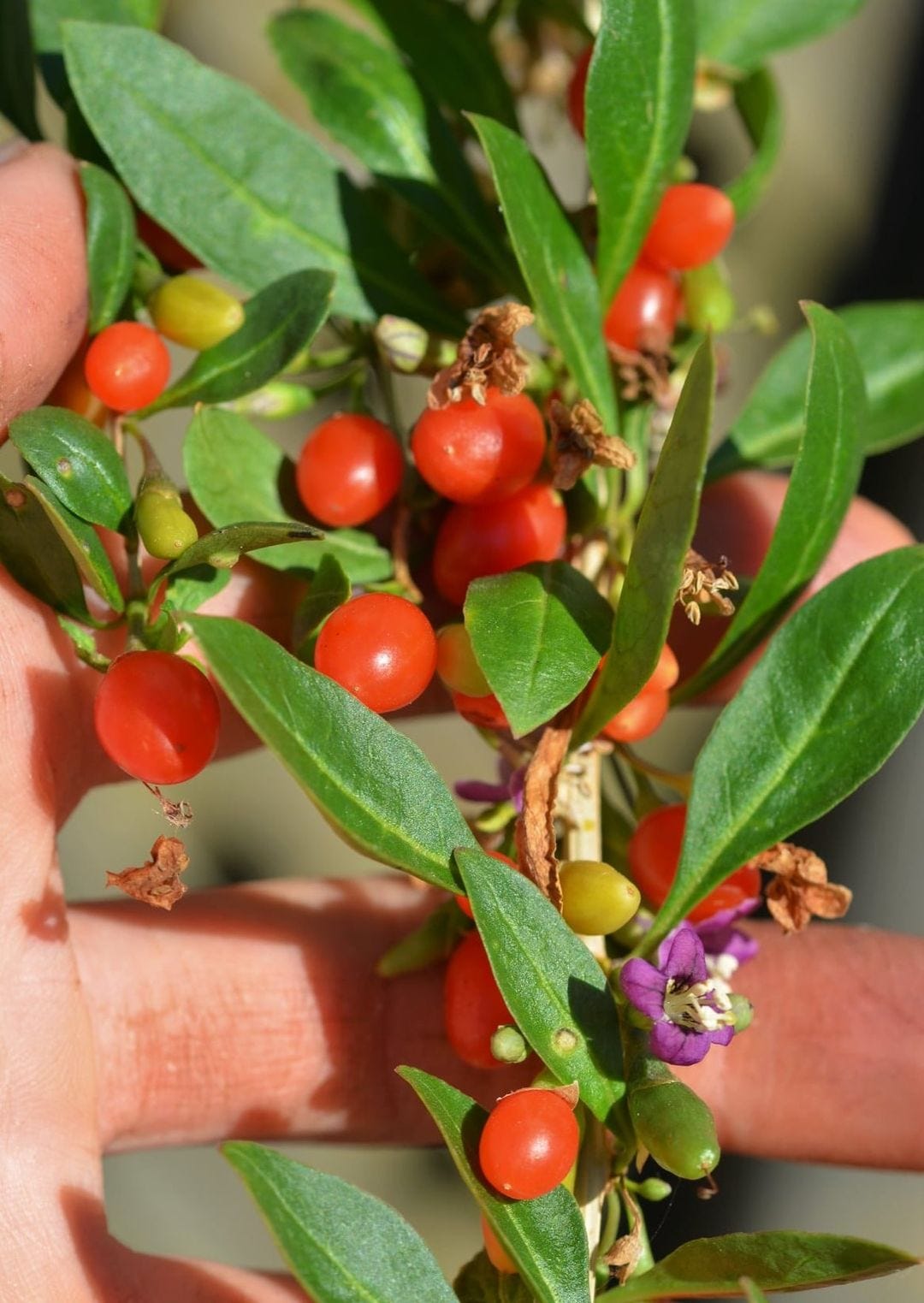

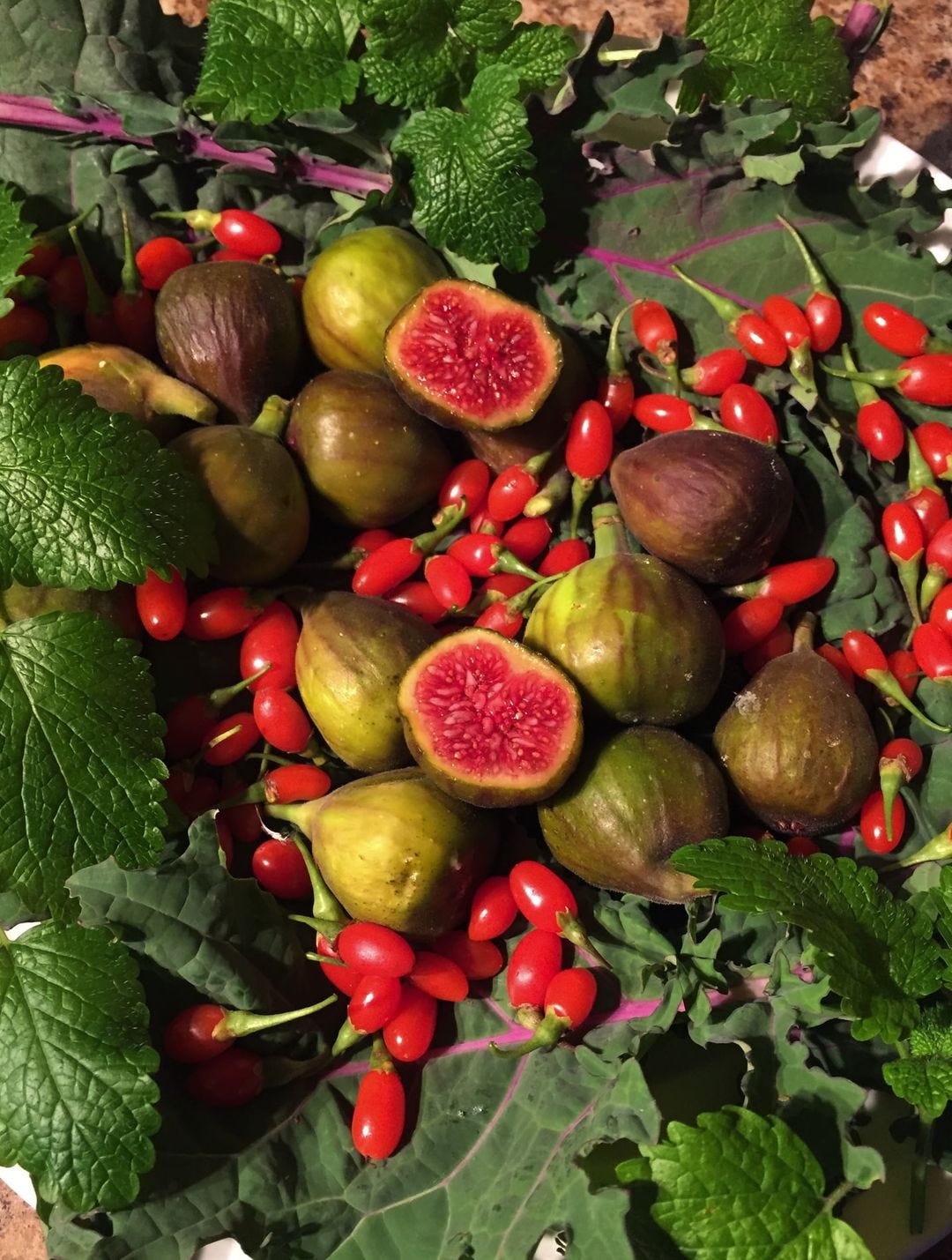
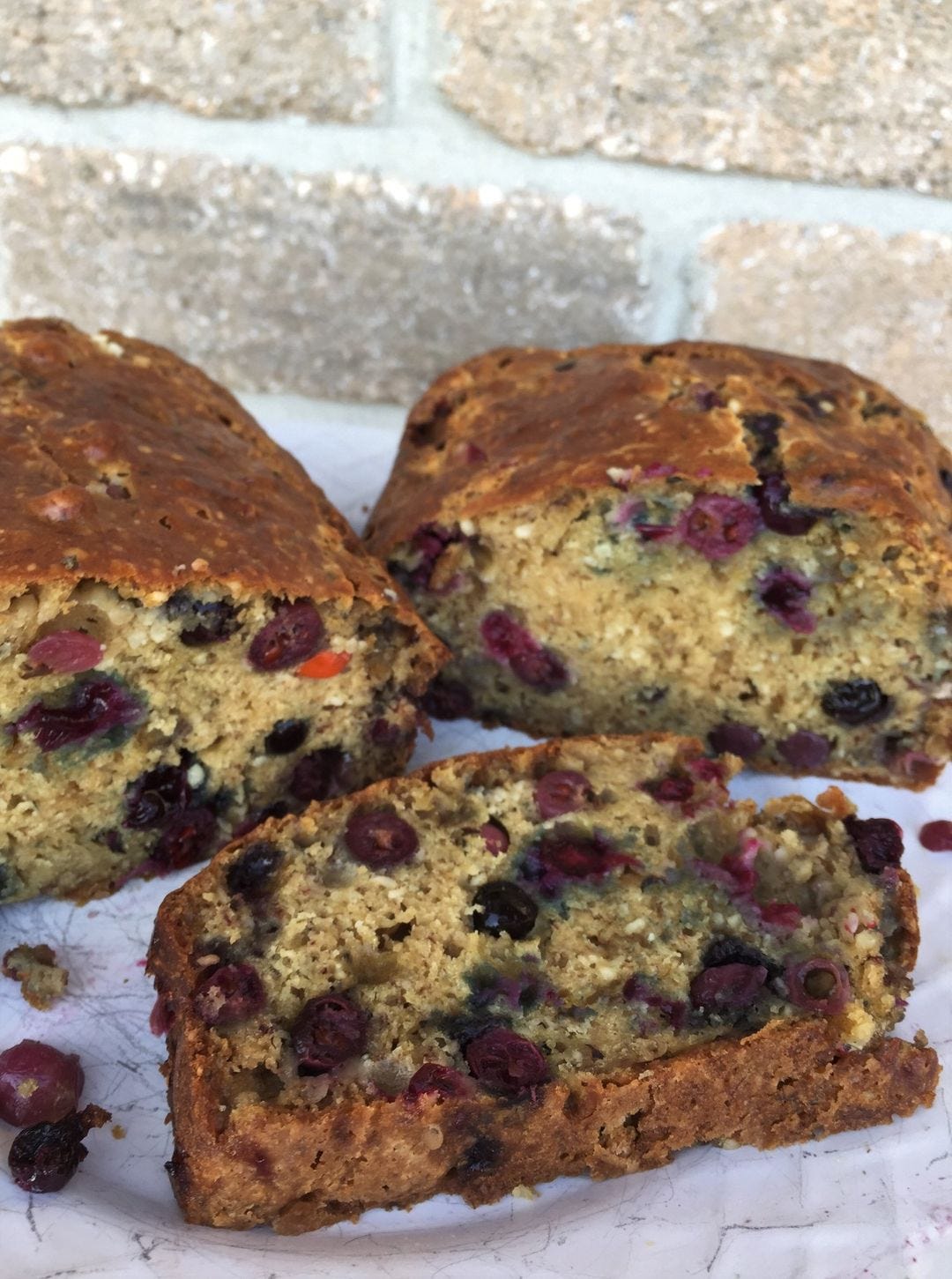
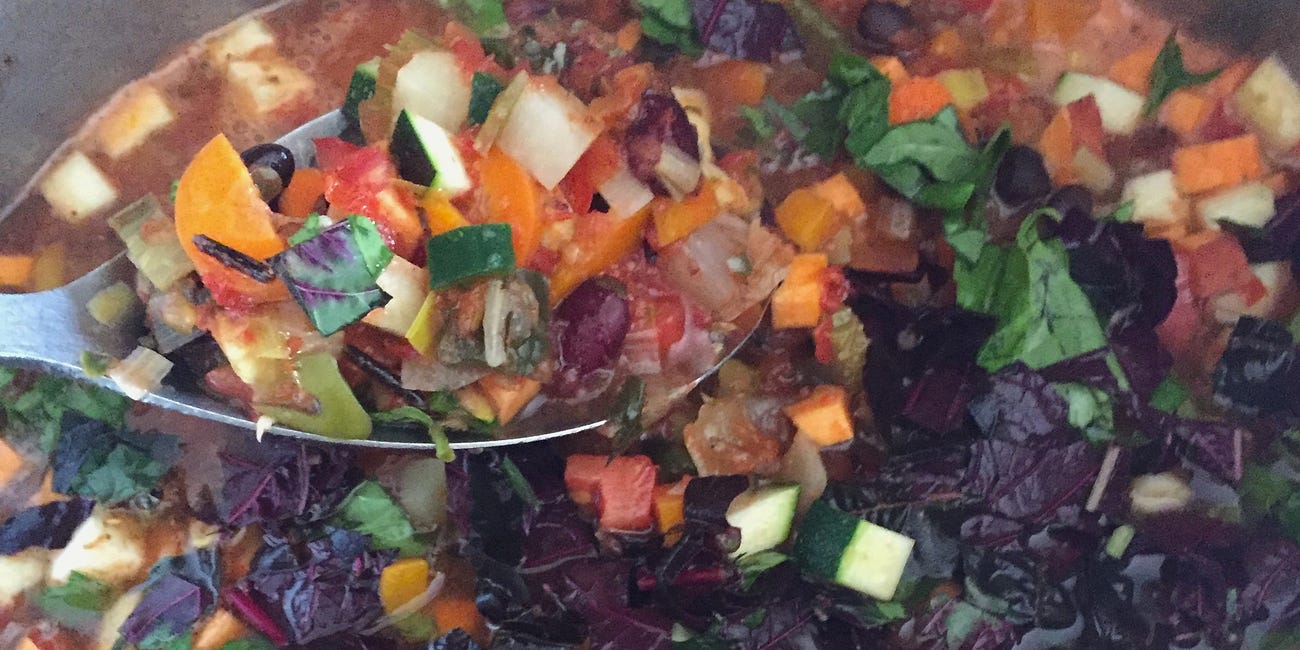

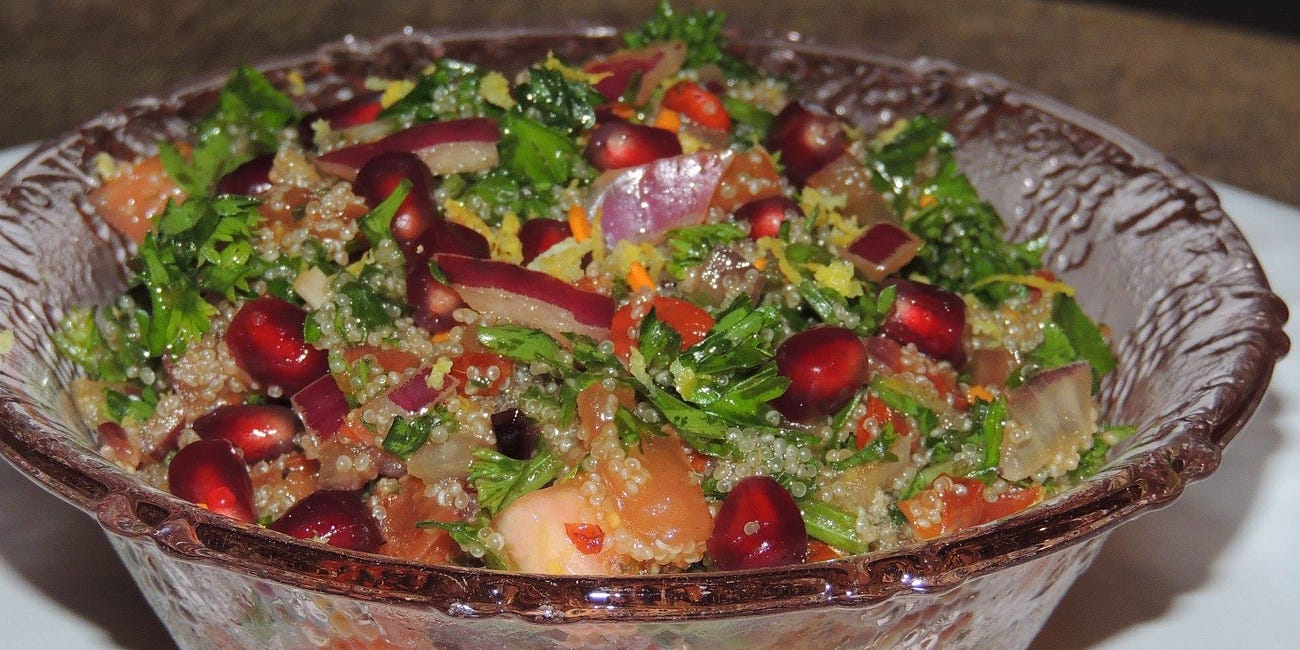

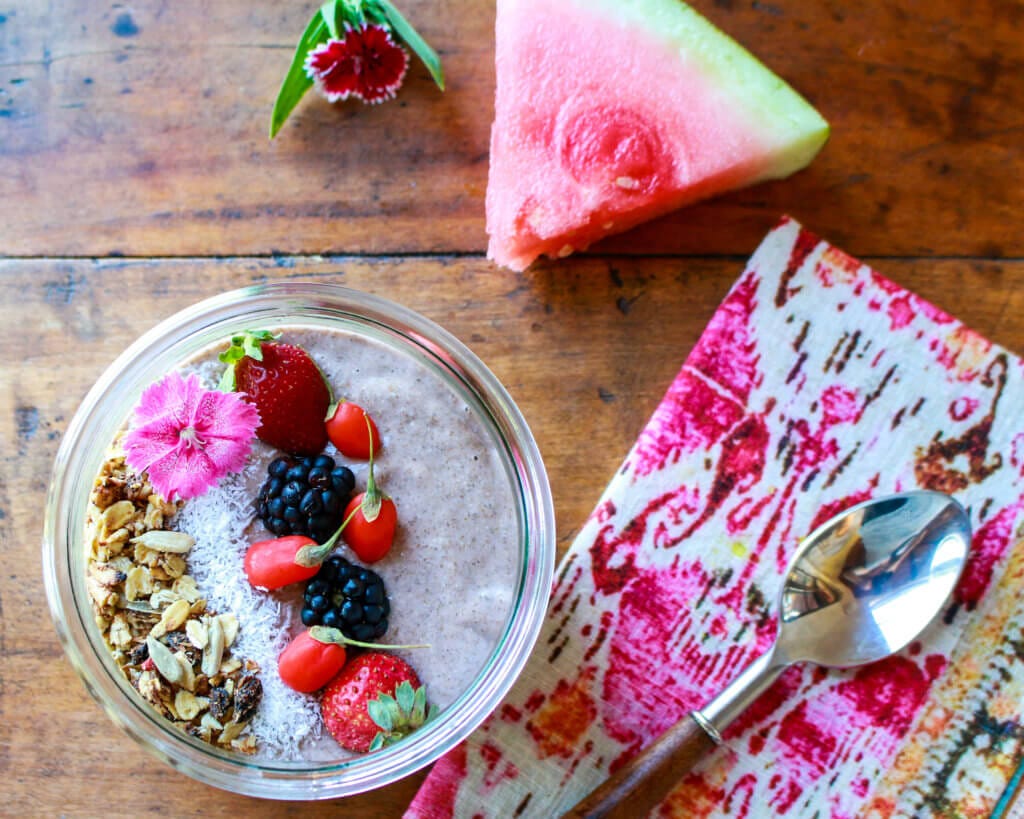
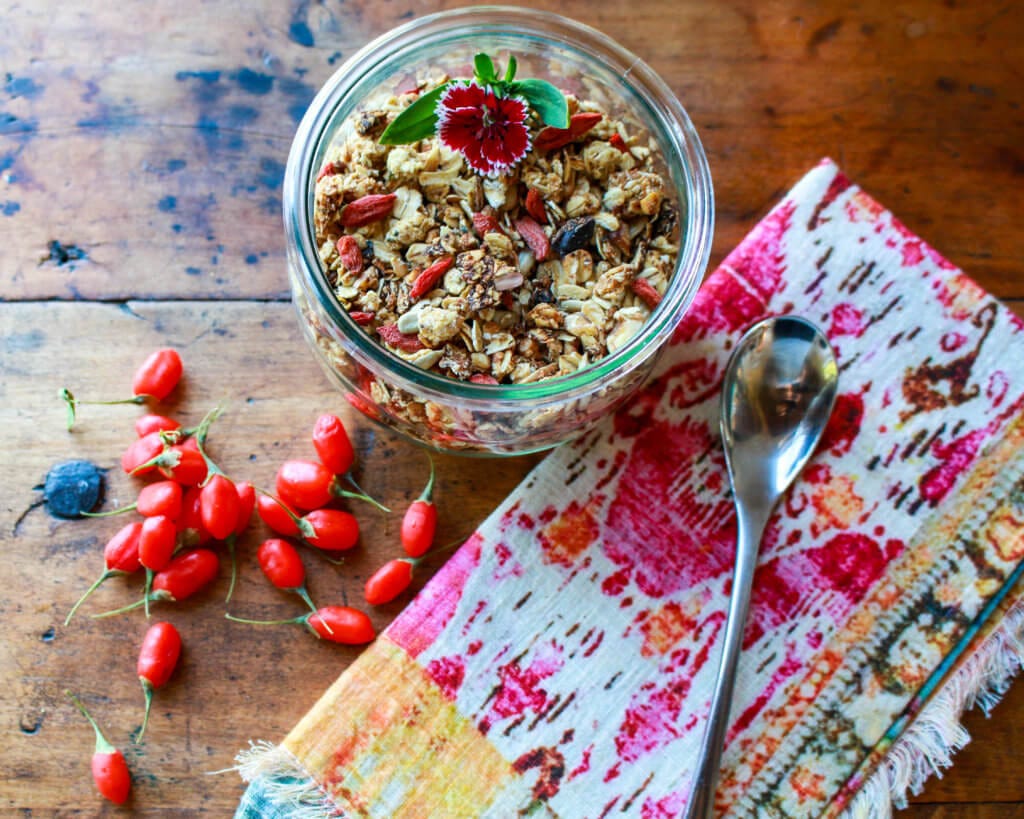
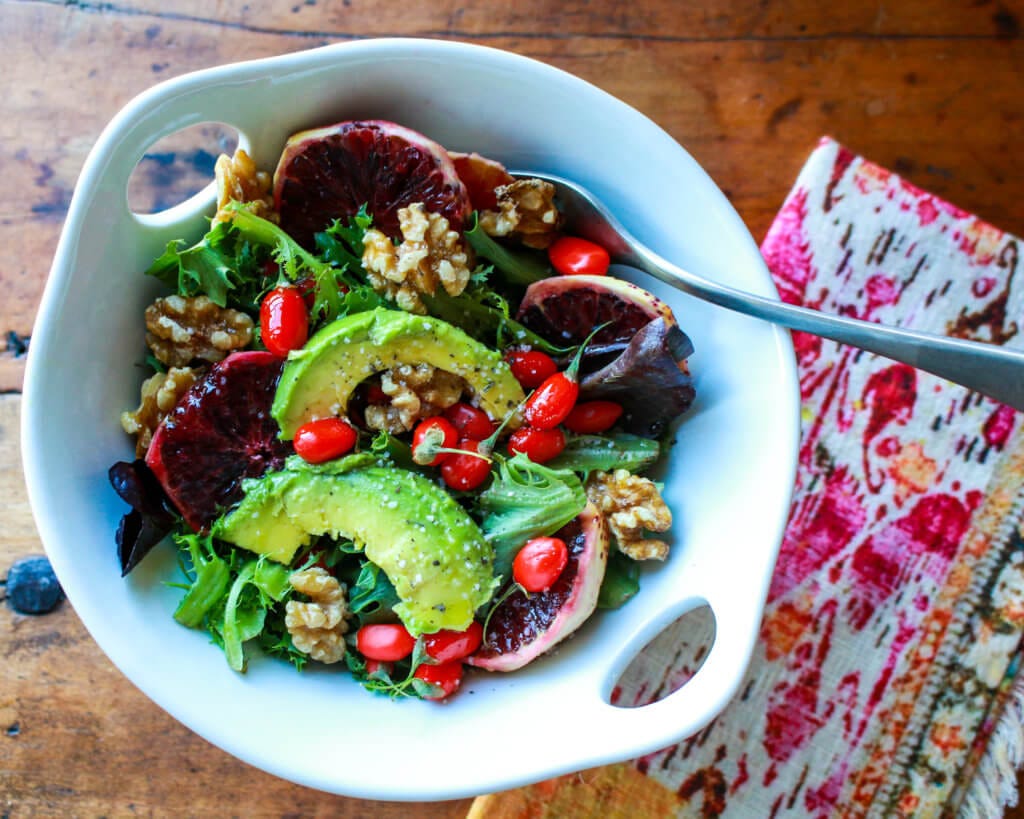

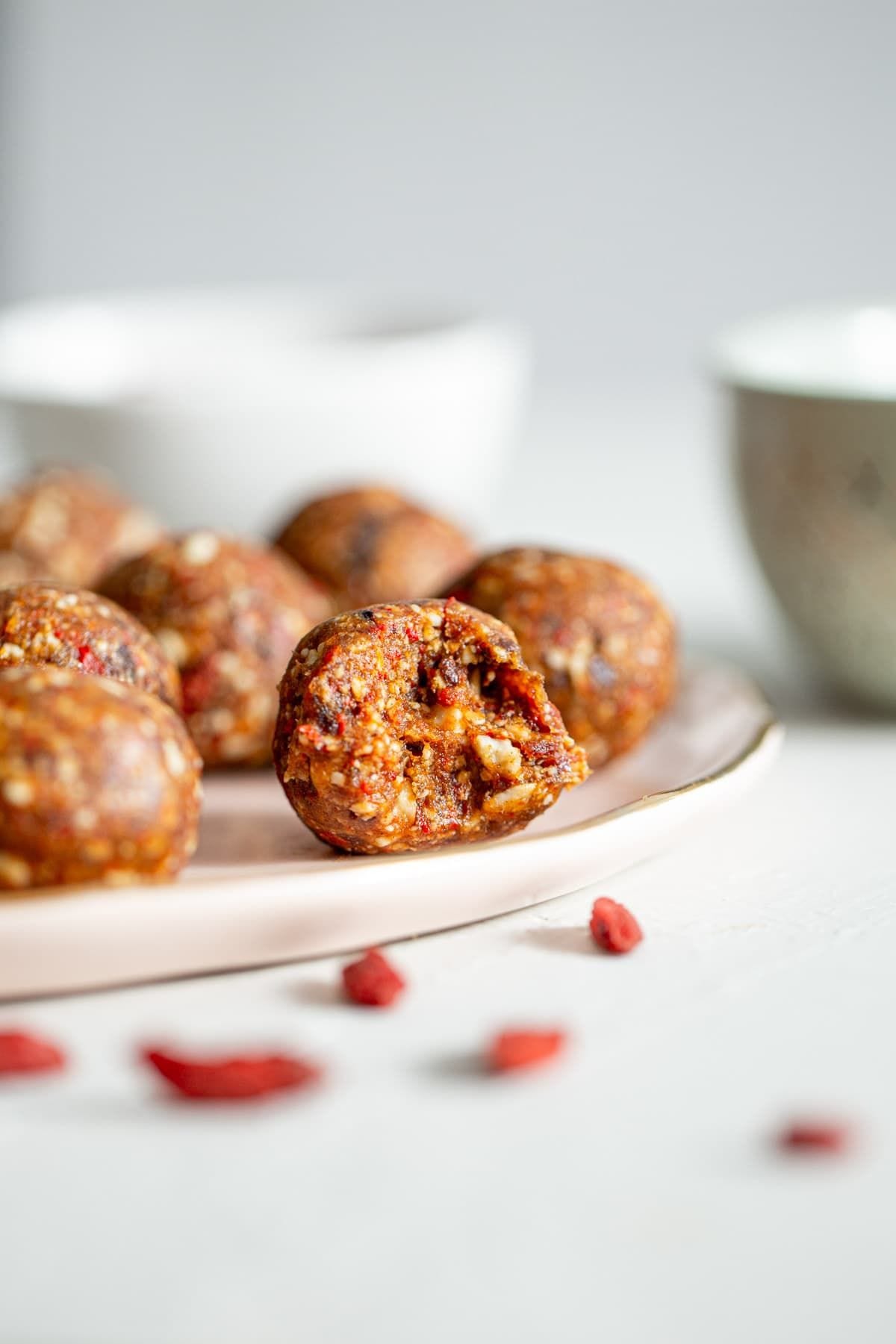
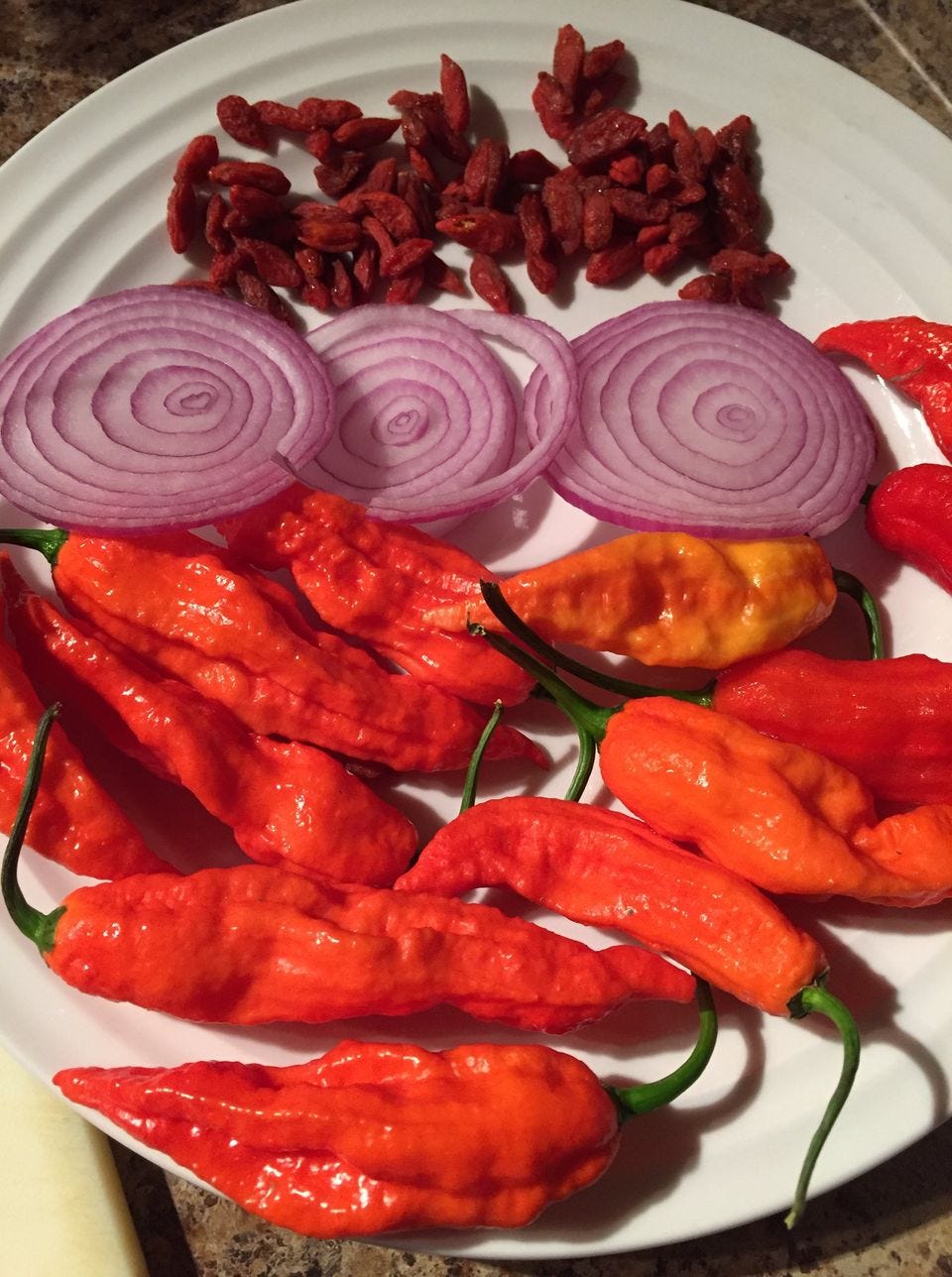
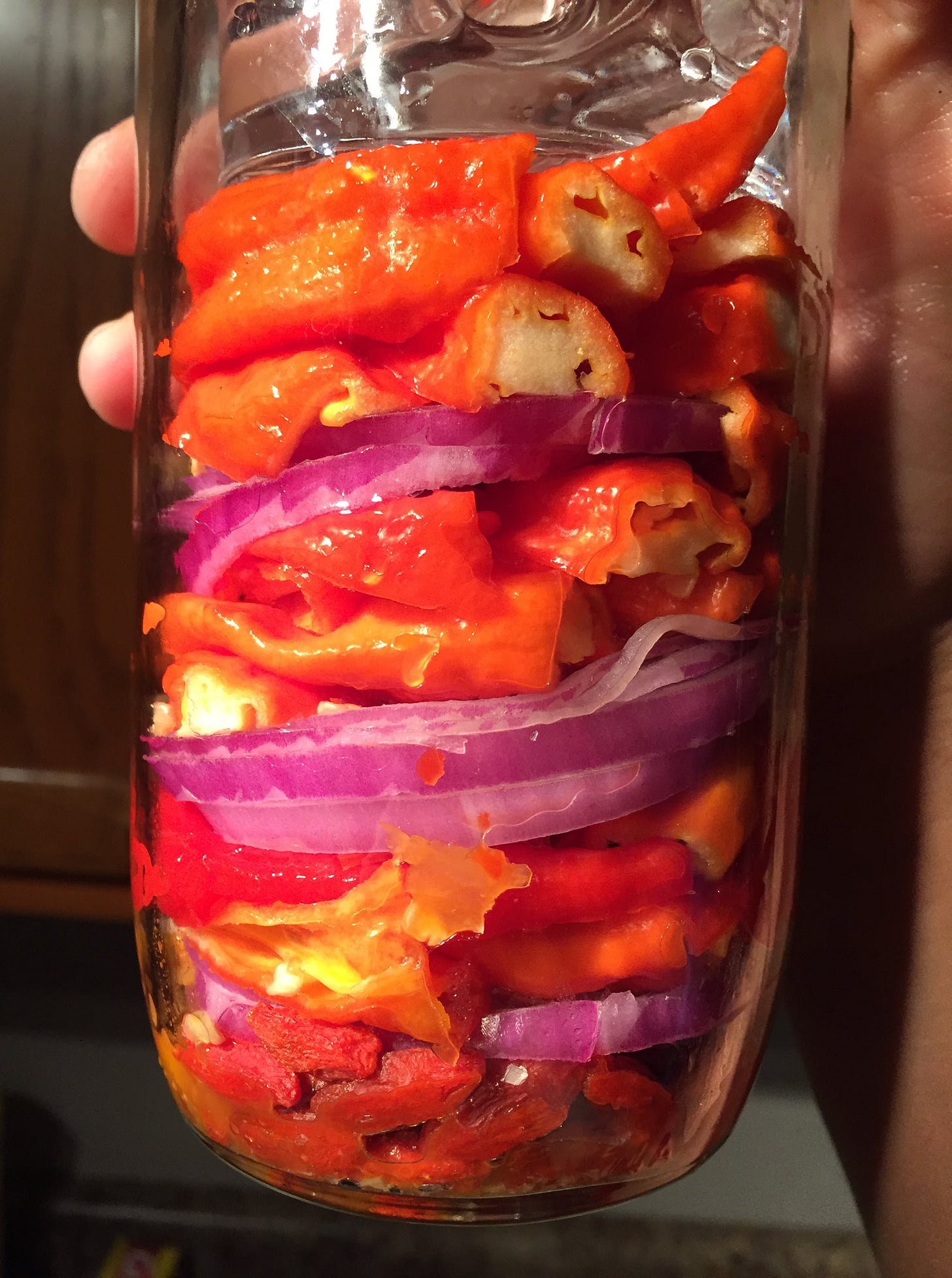

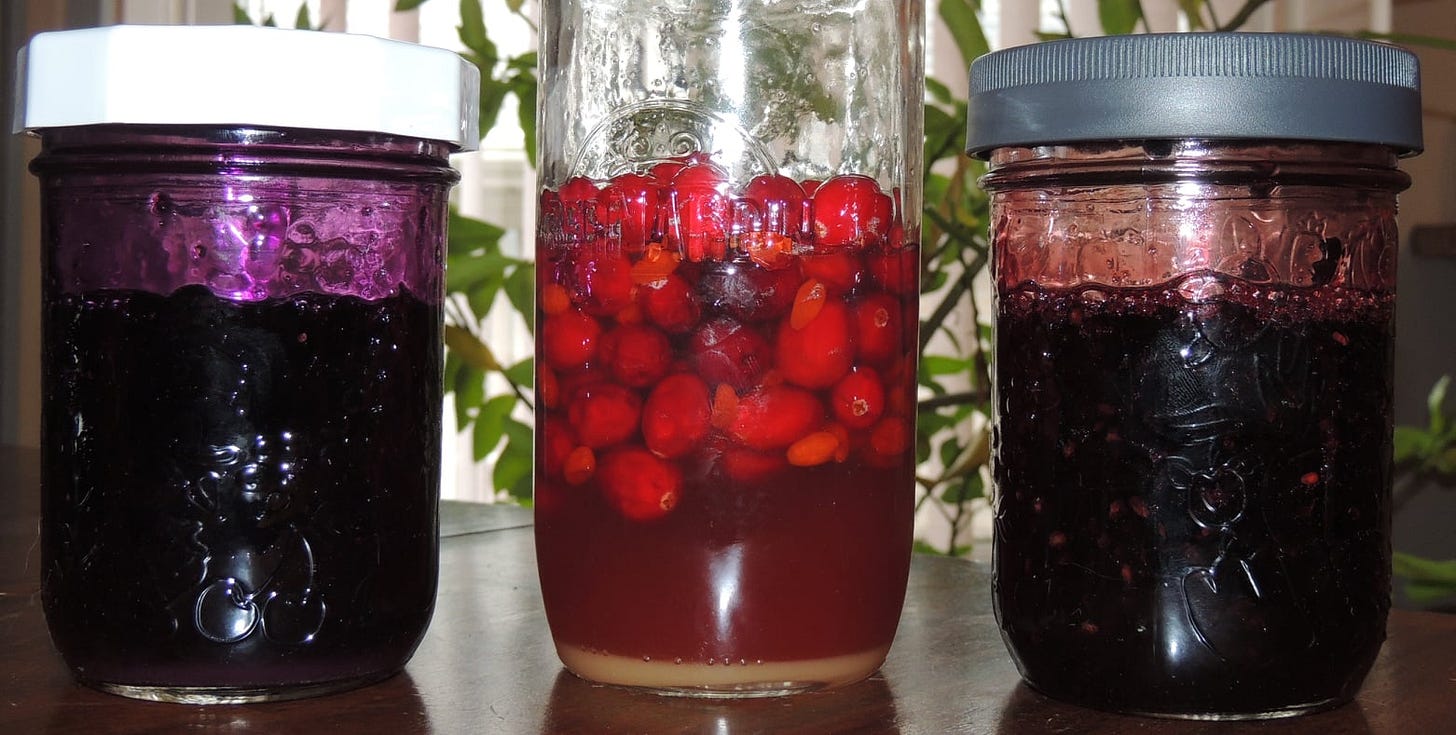

I like your term health sovereignty, Gavin, and the way that your natural ingredients enhance the body's ability to take care of itself rather than forcing certain reactions with chemicals. I think there's a parallel for how healthy community gov't should work, empowering families and neighborhoods to take care of each other.
And wow! I'm sold on the miracle berry. You gotta know that anything that could dye your whole wardrobe with one teaspoon is potent medicine! I'll leave the ghost peppers to you culinary skydivers, though.
You are a mine of information, Gavin! Thank you! It is lovely that Goji grows in some parts of America. I live in the UK and I dare say we could grow them but only somewhere like the Eden Project.